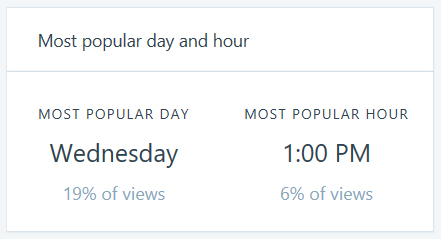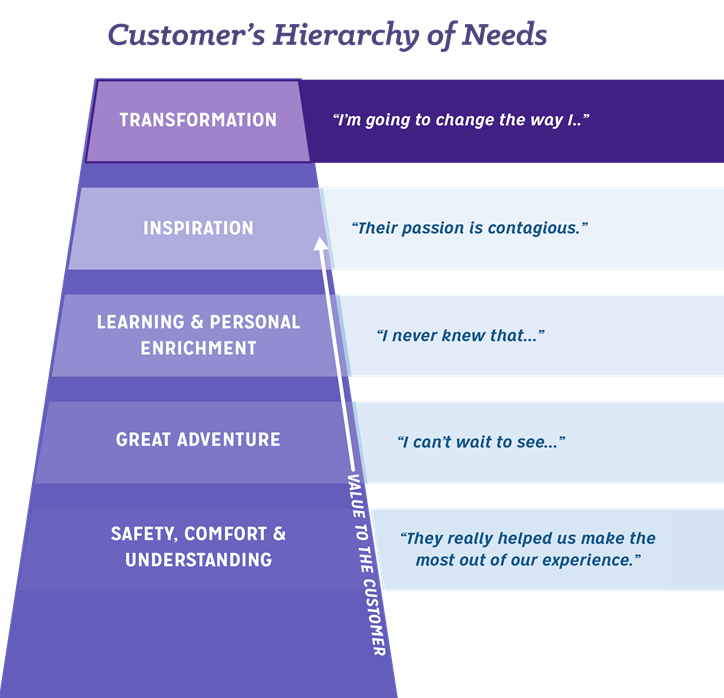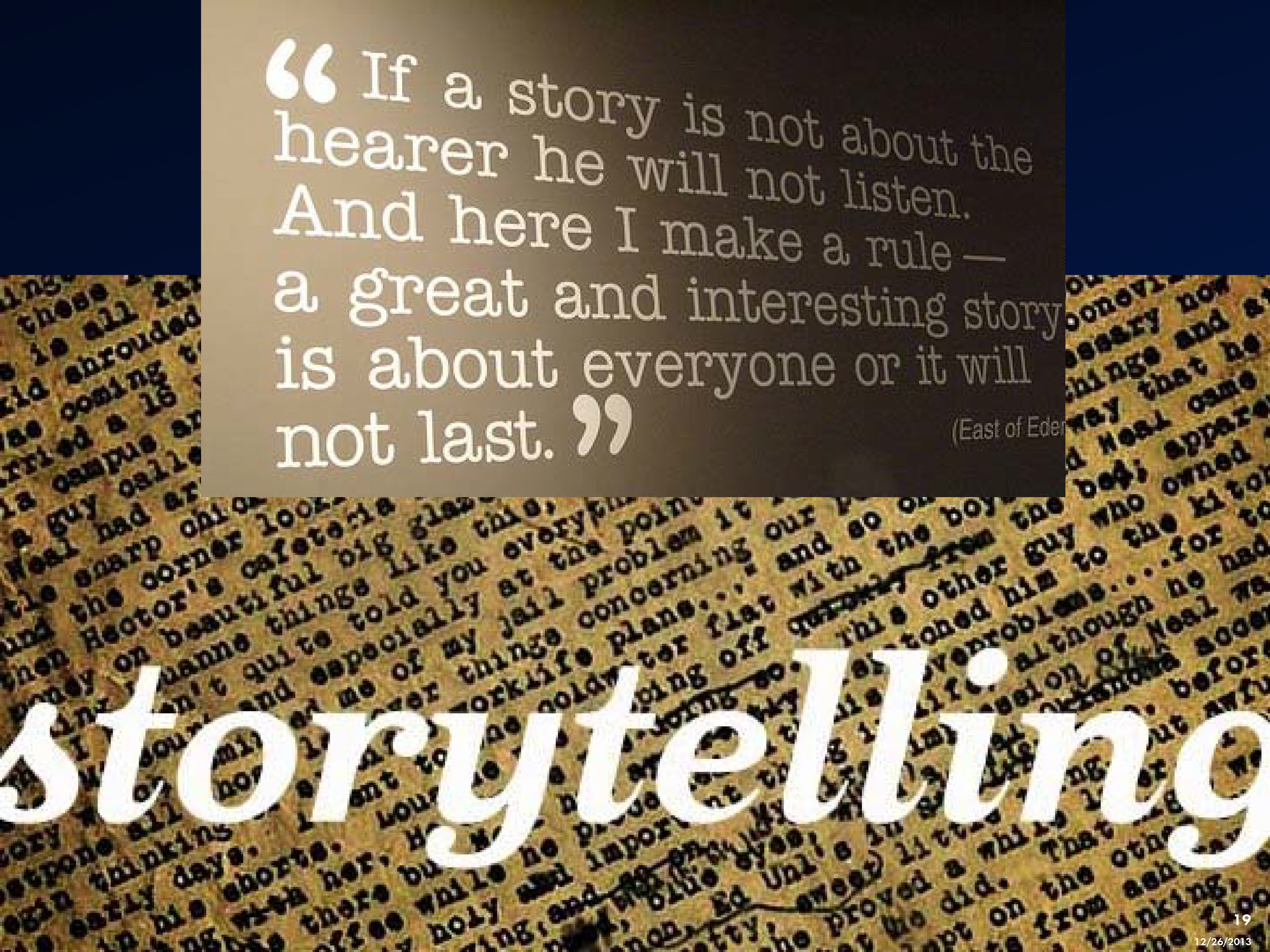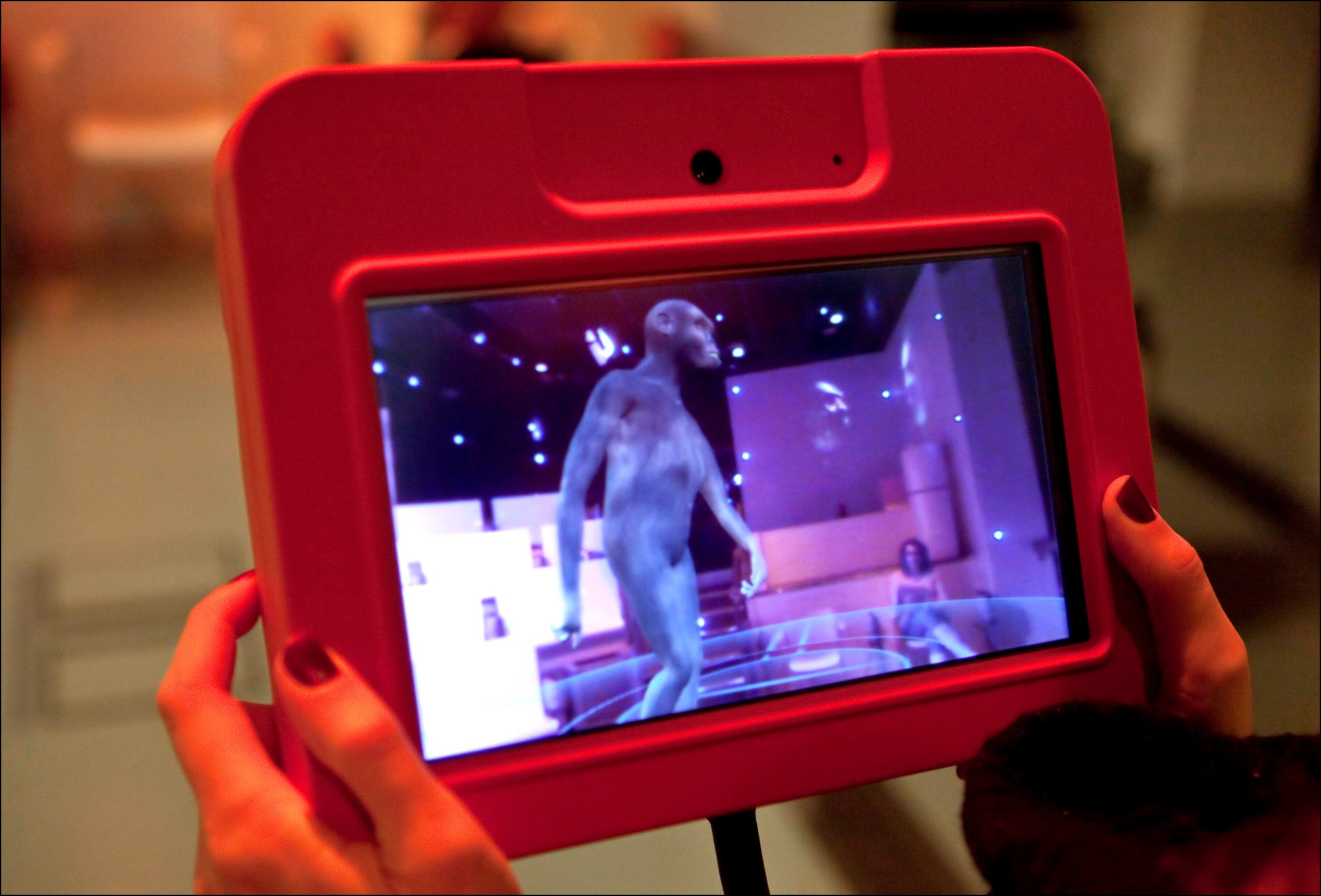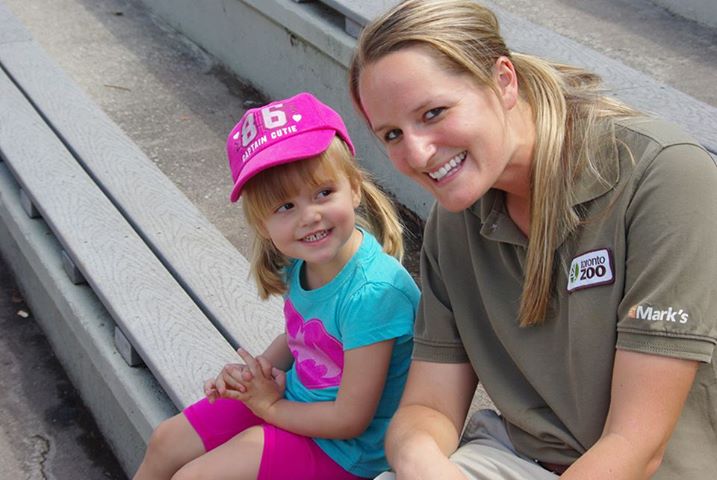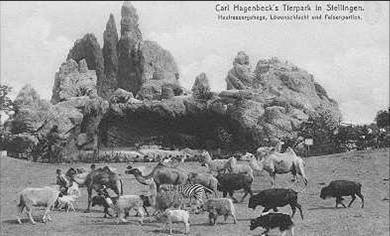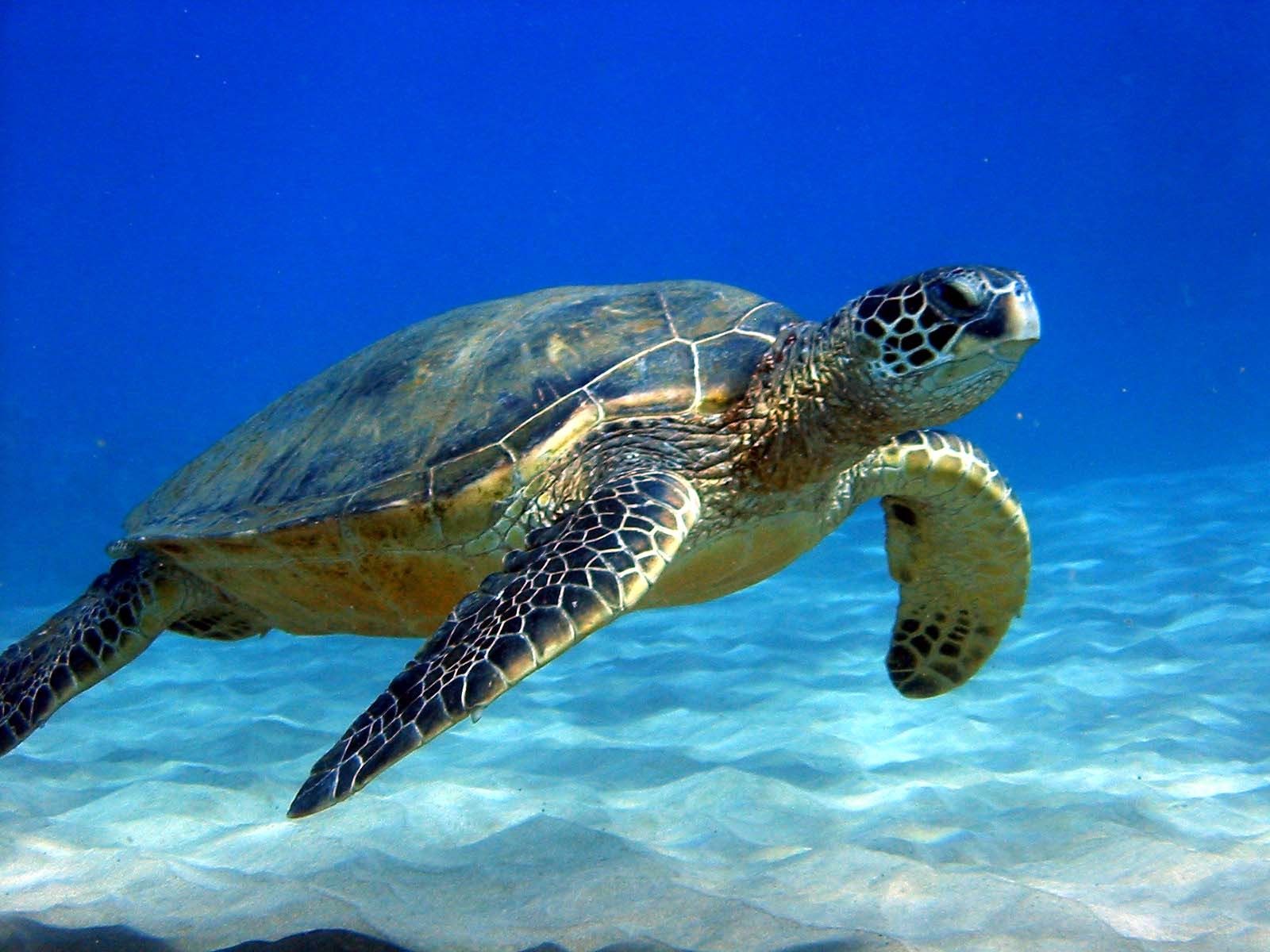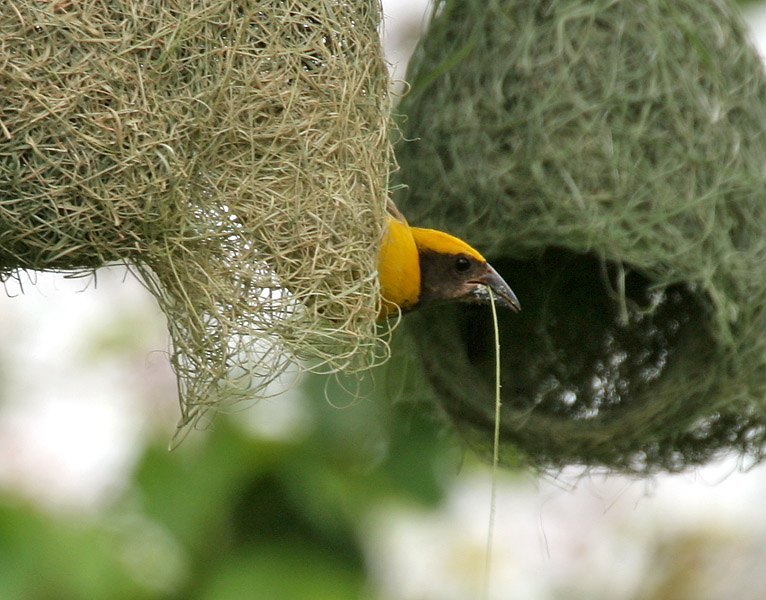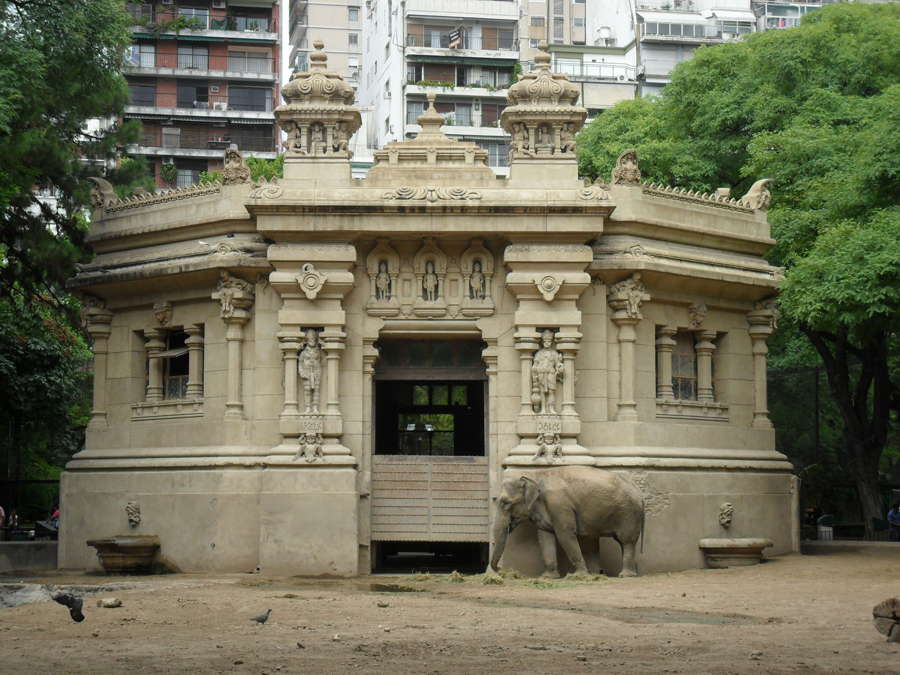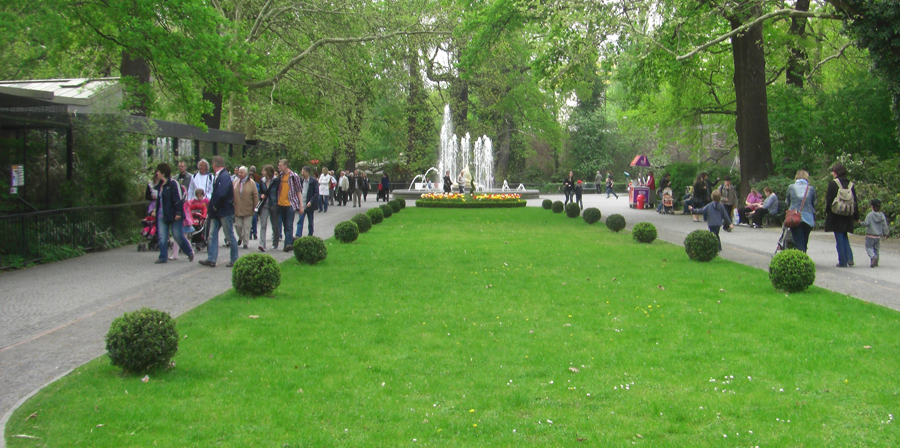As a designer dedicated to the long-term planning of zoos and aquariums, I’ve had to explain the process of master planning many times, and although every zoo and aquarium is different, the best master plans (i.e. those which have been implemented) always follow a similar structure. In this post, we address the most commonly asked questions to help you understand what master planning is, when is the right time to start, and who should be involved.
Happy Anniversary! 10 Years of DesigningZoos.com
Can you believe this summer marks ten years of my little corner of the internet talking about design and the future of zoos and aquariums? Although my posting has become more infrequent as my professional life has evolved, you--my supportive and sometimes thoughtfully critical reader--remain constant. I owe you a huge Thank You for reading my ramblings, and contributing your thoughts. For funsies, I thought we'd review a few of the highlights from the past 10 years and over 200 posts!
Top Ten All-Time-Most-Popular Posts (by visits)
10. "Visitors: An Overlooked Species at the Zoo" (2013) by guest blogger and colleague, Eileen (Ostermeier) Hill. Discusses the critical importance of visitor studies at zoos, some hurdles to studies, and the role of designers relative to visitor studies.
9. "The Future of Zoos: Blurring the Boundaries" (2014) a second entry by guest blogger and obviously brilliant colleague, Eileen Hill. Powerpoint presentation with script about trends in zoos today and how they may play out into zoos of the future. Eileen proposes zoos of the future will by hybrids of multiple science based institutions.
8. "St. Louis Zoo's SEA LION SOUND" (2012). Showcasing the then-new exhibit at the Zoo including fly-thru video, photos of new exhibit, and interview with one of the architects from PGAV Destinations who helped bring the design into reality.
7. "SAFARI AFRICA! Revealed at Columbus Zoo" (2012). Announcement of the ground-breaking of the eventual AZA Top Honors in Design award-winning Heart of Africa (renamed). Includes renderings and site plan.
6. "Underdogs: The Appeal of the Small Zoo" (2013). Exploration of what makes small zoos so appealing to visitors, and meaningful to work for as a designer. Features Binder Park Zoo, Central Florida Zoo, and Big Bear Alpine Zoo.
5. "In Marius' Honor" (2014) by guest blogger and now Project Manager at the esteemed Monterey Bay Aquarium, Trisha Crowe. Trisha explores her emotional reaction to the Copenhagen Zoo's disposal of Marius the giraffe, and implores readers to support zoos, no matter your stance on animal rights.
4. "Small and Sad: Dubai Zoo's Relocation on Hold Again" (2009). Occurred to me today, should have been title "Small and SAND", but the sad state of the old zoo is what made this post so popular. Includes design plans and renderings--which I am sure are woefully out of date. Anyone have any updates??
3. "How to Become a Zoo Designer" (2014). After about 25,000 emails from aspiring zoo designers asking similar questions, I just went ahead and wrote it up to shortcut a step... Still, feel free to email me--I always write back. Let's be pen pals!
2. "The Next Zoo Design Revolution" (2008). One of my very first posts, which explains the popularity. Some say naïve, some say gutsy look at incremental revolution in zoos. The future of zoos has been examined at least 300 times since this one, but in re-reading, I see some kernels of accuracy. Expect an update soon...
And in the #1 spot....
1. "A Quick Lesson in Zoo Design History" (2008). Perhaps my second post ever, which again explains it's number 1 spot. A not-as-advertised look at zoo design history which, I have a feeling, has been referenced by many of the 25,000 students (above) in their zoo projects. Holla at me if you cited me!
Top Ten Recommended Reads for Zoo Designers (aside from those above)
10. "To Safari or Night Safari" (2008). I'm a sucker for the title. But this post examines the very slow to catch on trend of after-hours programming or extended zoo hours as a feasible method to increase attendance. Post-posting amendment: in particular, this is a great strategy for targeting adults without kids.
9. "Does Winter Have to be a Dead Zone at the Zoo?" (2013). I cheated a little on this one. I didn't actually post to DZ.com, but to my blog at Blooloop.com where many of my more recent posts have been landing. This one discusses another strategy to increase attendance by targeting the most difficult time of year for temperate zoos: winter.
8. "Zoo Exhibits in Three Acts" (2011). Storytelling in zoo exhibits, told through, what else?: a story.
7. "8 Characteristics of Brand Experience" (2018). A new one! Understanding what makes strong brands so very strong is important and applicable to new attractions at zoos and aquariums. Examined through the lens of non-zoo brands, like my fav: OrangeTheory.
6. "Interactivity and Zoos" (2013). Examining the different modes of interactivity that are available in zoos, and how they can be applied to experience. A good primer.
5. "How Animal Behavior Drives Zoo Design" (2011). Starting with animals in design can be overwhelming. What information is pertinent to a designer, and what is just interesting to know. Another good primer for learning the basics of zoo design.
4. "Chasing Big Cats: Snow Leopards and Perseverance" (2017). Being a good designer is about so much more than just having cool ideas and being able to communicate them well. Learn the qualities intangible qualities that make good designers, GREAT. Don't be afraid...hint, hint.
3. "Making Responsible Tacos: Conservation Brand Perception at Zoos and Aquariums" (2015). Adapted from a talk I gave, I examine how aspirational brand should translate to experience in zoos and aquariums using the popular taco analogy. Yum. Tacos.
2. "Five Zoo Innovations that have been around for Decades"Part 1, Part 2, Part 3, Part 4, Part 5 (2014). Again, pulled from Blooloop. A series of 5 posts examining design elements and characteristics that American zoos have been implementing for decades. This series was an angry reaction to the 'revolutionary' design of metal pods floating through a zoo in Europe. A woman scorned...publishes 5 posts to prove how you don't know anything about innovation. Ha!
1. "Zoos in a Post Truth World" (2017). What every zoo and aquarium advocate needs to consider in this continued atmosphere of skepticism, critique, and distrust. As a zoo designer, you must be aware of changing perceptions and the power we have to shape them.
Top Ten Things I Learned in the Last Ten Years (Blogging or Otherwise...)
10. I'm not shy; I'm introverted
9. How to poop in a hole while wearing 3 three layers of snow pants
9a. Always pack enough Pepto tabs (at least 2 per day while away)
8. I'm not good at social media (see: 10 years of blogging and 600 Twitter followers, probably mostly for cat pics)
7. And speaking of cats, the rubbery buttons of a TV's remote control makes said remote an easy tool to remove cat hair from sofas and pants
6. I sleep better when flying in Business Class
5. Always pay the extra money to hire movers to load and unload that U-Haul
4. Writing isn't hard. Just start typing and...
3. Confidence
2. I lose all 'adultness' around ice cream and baby animals
1. Zoo and aquarium people are really the best people in the world.
Here's to many more decades of Zoo & Aquarium design!
With love and respect--
Your friend, Stacey
Building Public Trust: AZA Workshop
On Monday, September 11, PGAV Destinations led a session highlighting market research that explored the question "how can we affect public perception of zoos and aquariums?" The session included brief presentations by 9 panelists, including Bob Cisneros from Big Bear Alpine Zoo, Mark Fisher from Cincinnati Zoo, John Walczak from Louisville Zoo, Bill Street from SeaWorld, Chris Schmitz from Utah's Hogle Zoo, Magdaline Southard from Monterey Bay Aquarium, Kimberley Lengel from Philadelphia Zoo, Kevin Mills from South Carolina Aquarium (presented by Emily Howard of PGAV), and Stacey Ludlum from PGAV. Individual presentations unfortunately ran 20 minutes longer than anticipated, and the majority of our session audience did not participate in the workshop. However, we did have two intrepid groups discuss their hypothetical issues. Those results are below.
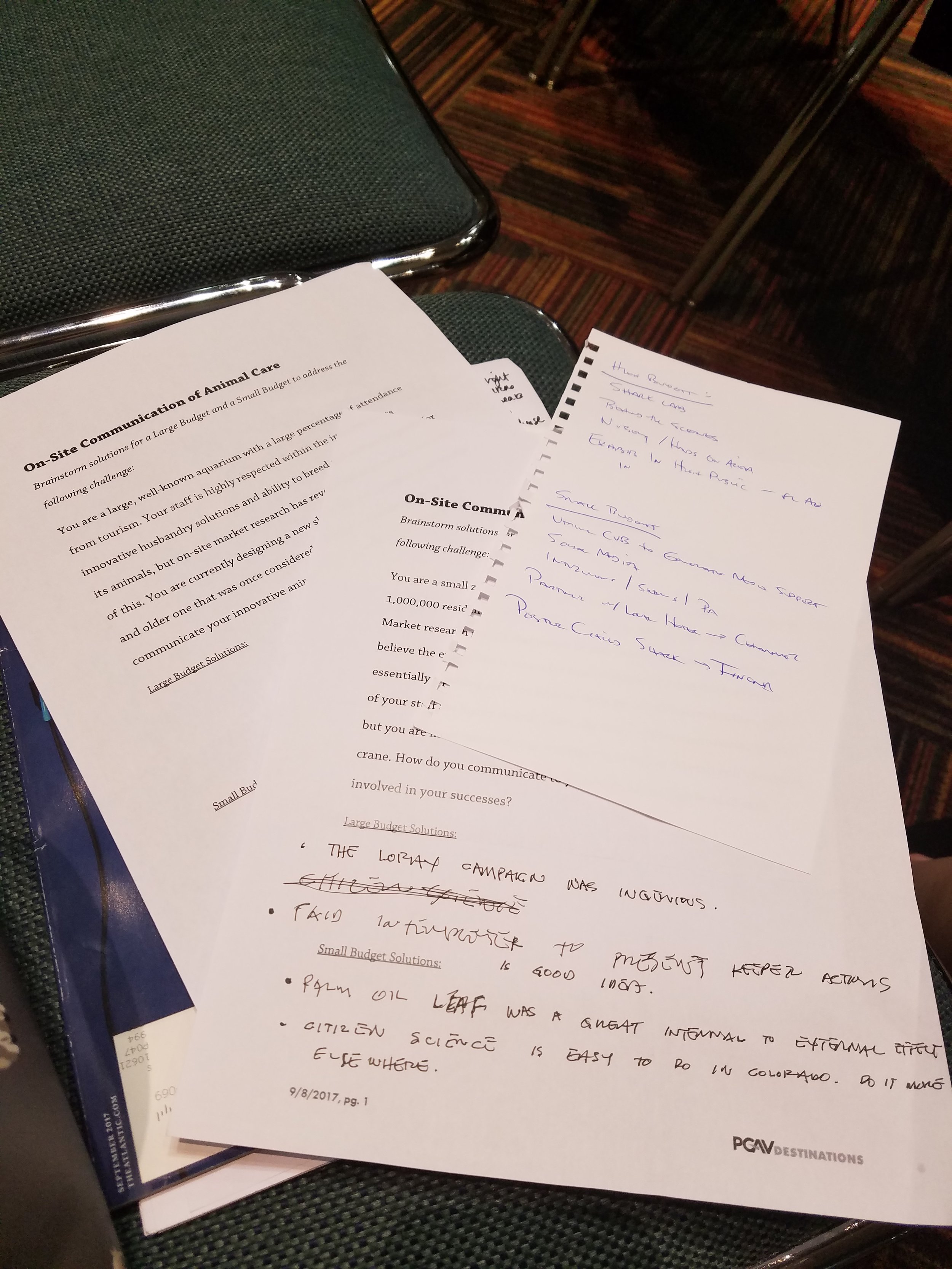
Question One:
You are a large, well-known aquarium with a large percentage of attendance from tourism. Your staff is highly respected within the industry for its innovative husbandry solutions and ability to breed and sustain longevity for its animals, but on-site market research has revealed your guests are not aware of this. You are currently designing a new shark exhibit to replace your smaller and older one that was once considered the best of the best. How do you communicate your innovative animal care at the core of your mission?
High Budget:
- Shark Lab
- Behind the Scenes views and tours
- Nursery and hands-on area
- Exhibit located in high public view
Low Budget:
- Utilize local CVB to generate media support
- Utilize social media to tell stories about poster child shark
- Partner with local news for interviews, regular media segments
Question Two:
You are a small zoo with steady, flat attendance in a medium-sized city (under 1,000,000 residents). Membership accounts for half of your attendance. Market research reveals that people in your community know of you, but believe the experience is meant for small children only and think of you as essentially a petting zoo. You have recently gained AZA accreditation, and all of your staff are highly skilled. Your collection includes many native species, but you are most proud of your successes in breeding cheetah and whooping crane. How do you communicate to your visitors the high level of care involved in your successes?
High Budget:
- Hire more staff to be interpreters on-site
- Engage in an interactive interpretive campaign that highlights the cheetah or whooping crane
- Adult oriented night event that celebrates cheetahs or whooping cranes and the keeper staff related to those animals
Low Budget:
- Citizen science program tracking whooping cranes in nature
Check back for more information on this session including write-ups of the individual presentations!
How to Become a Zoo Designer
Each week, I receive at least one email from an enthusiastic young soul asking for advice on how to become a zoo designer. Many requests are from college students, already several years into design school. Others are from enterprising high schoolers (and a junior high schooler or two) planning their futures. I've even corresponded with several mid-career adults, looking for guidance on how to change career paths. Every one of them (and, I assume, you, too!) are passionate about animals and seek to share that passion with zoo guests--to help them create connections to wildlife and become advocates for our natural resources. That's very admirable. That's where I started (and what keeps me energized), too.
But, let's talk some realities. As a zoo (and / or aquarium) designer, you will likely work for a private design firm, not a zoo. Zoos these days are starting to understand the value of on-staff designers, but the reality is, very few zoos actually have them; and more often than not, they do very little actual design work, or are relegated to small projects such as signage, snack stands, or demonstration gardens, leaving major capital projects to licensed architectural firms with greater resources. These zoo positions are usually most valuable as client representatives during the design and construction phases, acting as go-betweens (and sometimes decision-makers) for the zoo administration when communicating to designers and contractors. I do believe we will see an increase in these types of positions becoming available, though, as institutions realize the value of having staff that truly understand and are highly literate in design and construction--they can provide great insight to their consultants about the zoo itself, local regulations, and increase the efficiency of communication between consultants and staff, not to mention the fact that they understand drawings and help prevent issues down the line thus ultimately saving the zoo money.
So, let's say you're ready to get a job with a firm. Where do you start? Within the U.S., three major firms specialize in zoo and aquarium design (depending on how you define 'major'), and are generally the three competing for the major projects: Portico Group is in Seattle; PGAV Destinations is in St. Louis; CLR is in Philadelphia. Beyond these three, there are about 10+ small and medium firms, ranging from <5 staff to about 30 staff, located around the country that have completed zoo / aquarium design work, or specifically specialize in such. Seattle is a hot bed of activity due to "patient zero" Jones & Jones, from which most, but not all, firms that specialize in zoo design spawned. Wichita, New Orleans, and Boston are home to several others. If you decide you want to be a zoo or aquarium designer, you will likely live in one of these cities. I hope that's okay.
You've gotten a job! Congratulations! You've moved in, you're ready to go. Now what's the day to day for a zoo designer? Likely the first few years will be painful. Trust me. It's not what you expect. You'll have long hours (50-60+ hour weeks regularly) staring into the abyss of the computer, drawing things that someone else designed. Figuring out the details like the hinge on a gate or how to downspout a thematic wall. You likely will not do site visits or even be able to meet the clients for several years, until you've proven your worth. You may be shuffled from one project to the next without seeing a project from start to finish, often juggling multiple projects at once. But, it does get better, although not much more glamorous! When you do finally reach the point in your career when you get to visit the zoo you're working singularly for, you generally only get to see the inside of a conference room on a quick one or two day trip--where you'll spend the evening working in your hotel room on drawings that you didn't get to complete because you spent the whole day inside that conference room.
Still interested? Yes? Okay--let's get to what you really want to know: How do you become a zoo designer?
I wish there was a magic answer to this. There is no school of zoo design. No specific university, no highly specialized curriculum. Right now, if you want to become a zoo designer, you have to do it of your own accord. Most of today's successful zoo and aquarium designers fell into their jobs. They may have done a college project or volunteered at their local zoo, but the vast majority became zoo designers by dumb luck. They were architects or landscape architects that happened to work at a firm that happened to get a zoo project, and over time, one project became many. Before they knew it, they were experts. But, the fact that I get so many inquiries is telling me this is slowly changing. As zoos evolve, and exhibits become more engaging, young people are realizing the potential for design careers focused entirely on zoos and aquariums (museums and theme parks, too!). This will lead to more and more students with specialized experiences and focused educations. So how will you stand out??
Here are the basics I recommend:
Two degrees: Architecture or Landscape Architecture AND Zoology / Biology / Animal Sciences. It does not matter which design field you choose. The majority of the early design firms specializing in zoo design were traditionally landscape architects. That has changed. Architecture and landscape architecture are inextricably integrated when it comes to zoo design. Of course, if you are more inclined to design for aquariums, choose architecture. But if you want to design only for zoos or for both zoos and aquariums, go with what is more appealing to you. Do you like to design structures? Or are outdoor environments more appealing to you? Go with what will be most interesting to you. As for the science degree, this is not required, but is very appealing to employers. This will set you apart from other design-only students. You could also just get a minor, but doing so will be very challenging, as zoology is a highly rigorous degree while design school is extremely time-consuming. It is possible, but it will not be fun.
Focus every project where you have a choice of topic on zoos or aquariums. Believe me, it will be a challenge. You will get a lot of push-back from design profs wanting to encourage you to expand and explore. Go ahead, but if you truly believe you want to design zoos, you'll want every opportunity possible to explore this complex field.
Get an internship at a zoo / aquarium. Doing anything. You don't have to have a design internship. Repeat. You do not need a design internship at a zoo. You do need behind-the-scenes experience. Do an animal care internship. Do a marketing internship. Do whatever kind of internship you can get. You will need to understand every aspect of zoos in order to design effectively for them.
Get an internship at a ZOO / AQUARIUM design firm. Do not just get an internship at the local architecture firm near your university. This is a chance to see how zoo design really works, and get your foot in the door to one of the very few specialist firms in the country. While you are there, work hard. Ask lots of questions. Share your passion. We remember it when it comes time for you to send in your resume after all those years of school.
Research and network on your own. Visit zoos and aquariums as often as possible, attend AZA conferences, visit zoo design firms, get to know designers, get to know your local zoo. Basically, ask loads of questions, read as much on the topic as possible, get tours and behind the scenes as often as possible. Learning on this topic is not going to happen in school. You have to spend your own personal time researching and educating yourself.
One of the wonderful things about the zoo and aquarium industry is that most people involved are kind and willing to help, if you ask. Zoo and aquarium personnel are in it for
the love of animals, and usually are more than happy to answer questions or direct you to someone who can. I had a lot of great people help me get to where I am today, and hopefully, I can repay their kindness by helping others on their own journey. As always, if you have any questions or need advice, just ask.
If you'd like another zoo designer's opinion, check out Jon Coe's paper on how to become a zoo designer. There is definitely much overlap!
Good luck!!
The Whats, Whys and Hows of Guest Experience, Part 2
The following is an adaptation of a presentation I gave in September 2013 at the AZA National Conference as part of the session ‘Enrichment as Guest Experience.’ This is part two of two. Check out Part 1 here. What is experience?
Put quite simply, it’s everything. Literally and figuratively.
Experience at zoos and aquariums is everything from the moment your guest turns onto your property in their car. It’s every moment, every interaction with staff or animals, every view.
All of these moments combine and culminate to create an ultimately positive or negative association with your institution.
Experience is also quite possibly the most important aspect of what you do.
Maslow’s Hierarchy of Needs summarizes the pattern of human motivations from the most basic to the sublime. A parallel can be made to your guests’ needs. Meaning, before we can reach people on a transformational level, we must satisfy their lesser needs beginning with the desire first to be comfortable and safe, moving through to simply having a good time, onto learning something, which sparks something deeper (the ‘I wanna help’ moment), and ultimately providing them the inspiration to take action.
The key here is to remember that your guests do not come through the door ready to be transformed. We must provide a great guest experience starting with the most basic needs guiding them to transformation.
Why do we care?
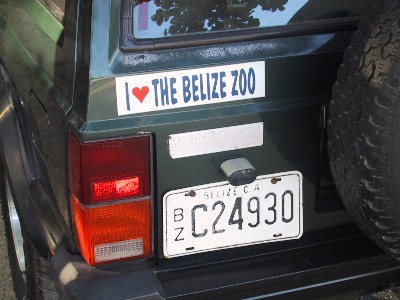
This one’s simple. The ultimate goal of every visit is to create or facilitate transformational experiences. We do this through engagement, empathy and empowerment. We aim to create Activists—both for conservation and wildlife, but also for your institution itself. Your guests are your best marketing tool and PR managers—when they’re on your side.
How do we optimize experience to achieve our goals?
One major method is through the use of storytelling. Yes, it’s a buzzword right now, but for good reason: it works. Human beings have been using storytelling as a means to convey information for thousands of years. Why not use what works? And it’s universal, appealing to every age group, ethnicity and educational background on the planet.
But stories are no longer passive or 2D experiences. Our lives are dominated by choice and interactivity. We live in an instant gratification society. This doesn’t necessarily mean that every experience should incorporate digital media. It simply means people today like to display some control over their environment, and the more choice we can give them, the more engaged our guests will become.
Storytelling in zoos primarily occurs through three methods:
1. Environment: Sensorial cues begin to tell a story by creating a setting
Humans are highly visual, and in fact, as state before, we’re highly sensorial—and the connection with the senses, the more powerful memories may be. Creating places that stimulate the senses triggers other memories and sparks the imagination.
Environment can also contribute to story with the use of the unexpected. Our minds work by piecing information together by making assumptions based on past experiences. When something doesn’t look or feel as we expected, our minds go into overtime trying to reconcile the past experience with the current. This leads to a simple truth: surprise gets our attention.
2. People: Direct and effective communication of story
Humans are social animals. We yearn to connect with others. We want to find commonalities, to empathize. So it’s no surprise that storytelling is most effectively achieved by people connecting with people. In fact, it’s been shown in study after study that guests learn more and are more interested in the animals at zoos after interacting with docents and keepers.
3. Animals: The heart of the story
The best animal stories are those told by the animals themselves. Similar to our desire to connect socially with other humans, we also want to connect with animals. And if you examine how we connect, you’ll see it’s often with our senses—perhaps most importantly, through the sense of touch.
One of the most memorable, most affecting guest experiences is being able to physically touch animals. But, if we cannot touch, we want to be as close to the animal as possible. We want to interact with the animal, we want to get a reaction from the animal. We want to feel as if we’ve been noticed and seen—like we’ve engaged directly—with the animal. Just like how we connect with people.
And again, just like how we connect with each other, we’re seeking to find similarities with animals; looking for comparisons between how we look and behave. The stories we tell about animals are often most engaging when we’re building empathy through understanding—by looking for ways that they’re ‘just like me!’
These three elements of storytelling are also major aspects of Enrichment. Environment is enrichment through provision of choice, change in habitat, toys, etc. People deliver the enrichment whether through keepers or even special guest experiences. And, of course, the Animals are the recipients of the enrichment.
Getting creative about how we enrich the animals in captivity while also keeping the guest experience top of mine will only continue to improve the guest experience and ability of zoos and aquariums to achieve their missions.
The Whats, Whys and Hows of Guest Experience, Part 1
The following is an adaptation of a presentation I gave in September 2013 at the AZA National Conference as part of the session ‘Enrichment as Guest Experience.’ This is part one of two.
The guest experience is a critical component to any institution that aspires to educate the general public in a single visit. Zoos and aquariums have a trick up their sleeve, however: the animals. And as long as we optimize the connection between guests and the animals, the guest experience is elevated. In order to ‘optimize connection,’ zoos and aquariums can and should use enrichment as a critical element of the guest experience.
Zoos and aquariums are doing fantastic work across the country and around the world working on conservation, research and education programs.
With all of this great work, sometimes a critical characteristic of the institutions is overlooked: the Guests. Zoos and aquariums are places for leisure and recreation.
They are places that people primarily visit for wholesome, family fun which means we have a captive audience, day in and day out, to which we can directly connect. Because of that, we cannot overlook the fundamental aspect that keeps people coming back again and again…The Guest Experience.
Simply put, if guests don’t have a great time, they simply won’t come back.
What goes hand in hand with having a great time? Creating memories. We have to always remember that we are helping our guests make lifelong memories.
Indulge me here. Let’s take a moment to explore memory making. Positive or negative, memories capture a moment in time, and influence future decision making. A memory is truly a living portrait of an experience--and an experience that makes the most powerful memory has some very specific attributes.
1. It’s sensorial
There’s a touch, taste, smell, sound or sight associated with the experience. Something that will bring you back to that moment in an instant. For me, mothballs remind me of Spring Break at my grandma’s in Florida—doing homework at the kitchen table from the extra days off for the trip. For some people, music is especially nostalgic…Weezer’s Undone (The Sweater Song) takes me back to dancing around my high school best friend’s living room.
2. It’s emotional
Happiness, love, fear, embarrassment are captured fully in memories. Our happiest moments are easily remembered, of course. But, on the flipside, trauma also sticks with us. One of my earliest memories is of Santa—and of me, at 3 or 4 years old, hiding under the dining room table at my grandparents’ house clutching the table leg for dear life, tears streaming down my face, shaking in fear of the gigantic, loud, creepy stranger with a weird laugh sitting in my Pappy’s chair and eating our cookies. Not cool, Santa. Not cool.
3. It’s new
Our first time. It sticks with us. The experience of trying and failing, trying and overcoming. The excitement of doing something for the very first time. These are strong experiences that beget strong memories. Even for seasoned professionals, that first snuggle with a snow leopard cub sticks with you.
Okay, so we get memory making in general, so next we'll talk about memory making—and thus experience--at zoos and aquariums specifically. Check back soon for Part II.
Entertaining the Future, Part 2
What the Future Holds for Entertainment in Zoos and Aquariums
By Dave Cooperstein
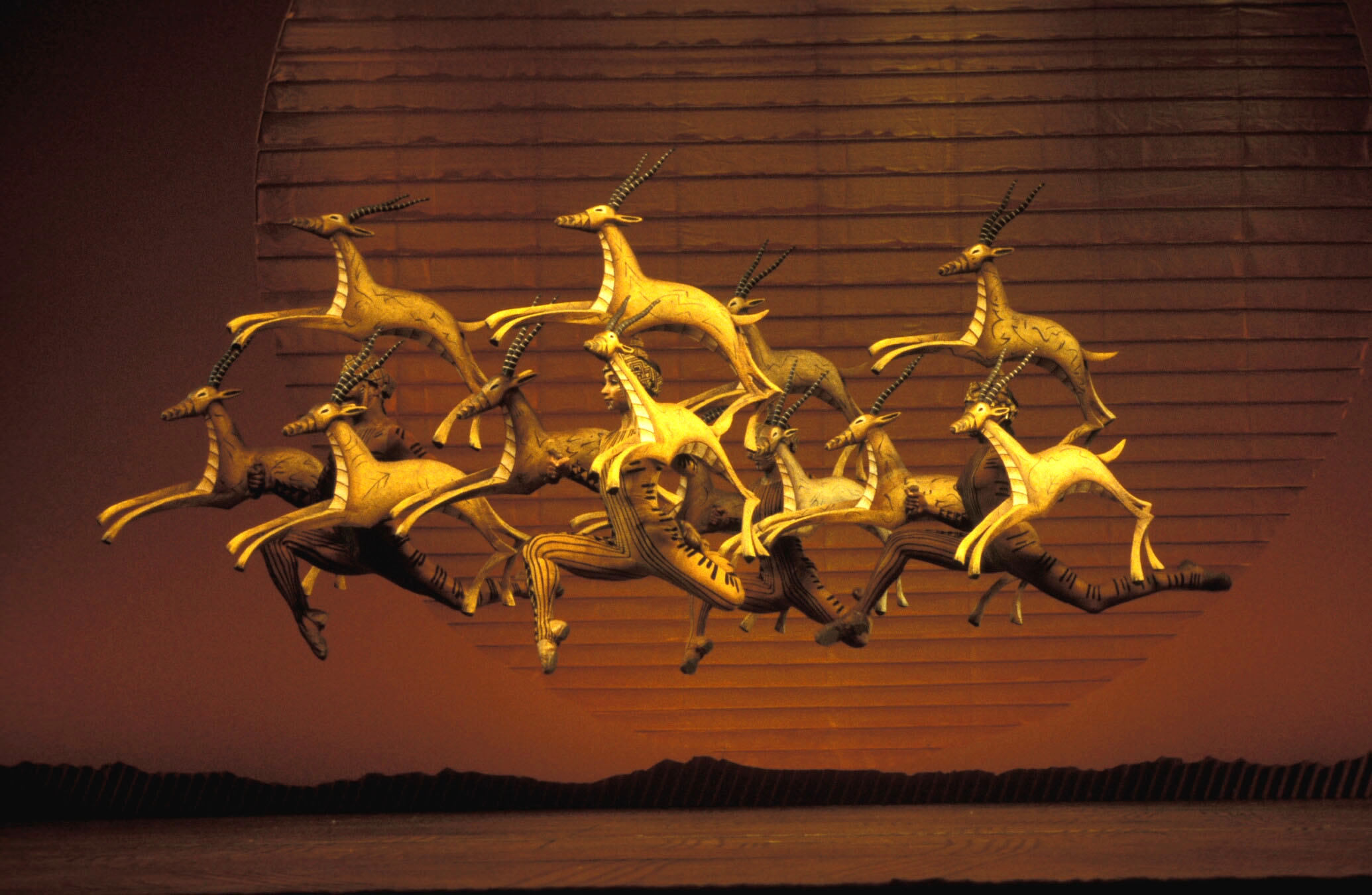
I believe that there is a LOT of value in looking at examples of Show Productions outside the Zoo and Aquarium world, specifically Broadway and Vegas, because these attractions can teach us a lot about where we are headed…about where the future of Show Production lies.
In order to figure out what Tomorrow holds, we first need to look at Yesterday and Today.
Yesterday
When thinking about shows from 20 years ago (or longer), you’re really talking about what most people think of when they think of “Broadway”…a big budget musical, with a linear storyline, huge sets, elaborate costumes, maybe a few special f/x (but nothing outrageous), a big cast (usually), and lots of really great dialogue and/or songs. The focus was on the STORY and the CHARACTERS. These are the shows that Broadway was built on, and have stood 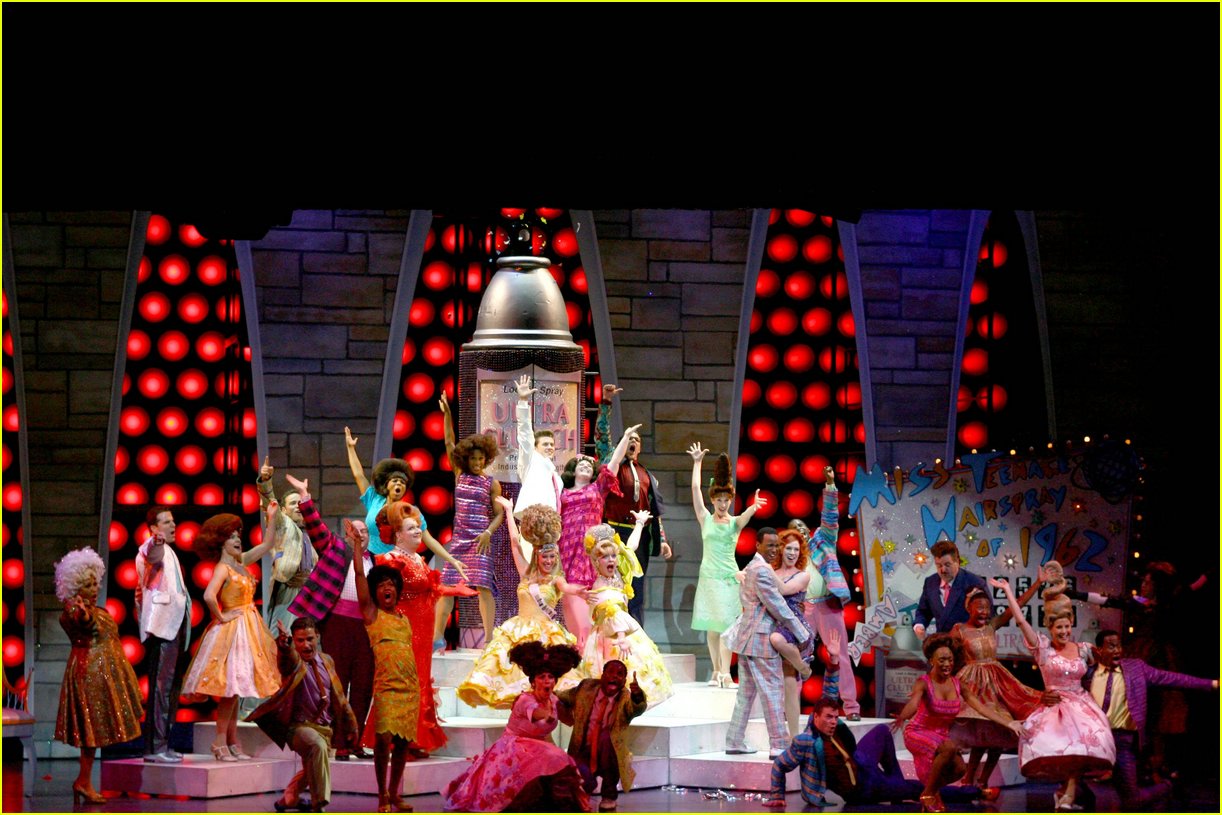 the test of time over the decades. Think:
the test of time over the decades. Think:
- “Hello Dolly!”
- “Oklahoma”
- “Cabaret”
- “Phantom of the Opera”
- “Les Miserables”
- “Avenue Q”
- “Hairspray”
To make a connection to the zoo and aquarium world, I would liken these types of “Yesterday” shows to early shows, where the focus was on the ANIMALS and their stories, at
- SeaWorld – Shamu, Dolphin, Sea Lion/Otter, Pet’s Rule
- Shedd Aquarium – Dolphin
- Classic Bird Shows
Today
In the past 5 to 10 years, and probably for the next 5 or 10, one of the big trends has been the incorporation of technology into theater. This is more than just a few special effects (like the turntable in "Les Mis", or the falling chandelier and floating candles in "Phantom"), but really the integration of technology into the entire production (music, props, sets, costumes, lights). It’s about Technology (Video Projection, Puppetry, Computer Lighting) infused into the storytelling. This is a trend that started a long time ago (more than 10 years ago) with shows like “The Lion King”, and has been taken to a new level with shows like those by Cirque du Soleil, which use technology as one of the main drivers of the performances (think “O”, which is done entirely over a giant stage pool).
Again, to bring this to the Zoo and Aquarium world, I would liken these to some of the more recent shows at:
- SeaWorld – “Cirque de lar Mer”, “Blue Horizons," “Believe”
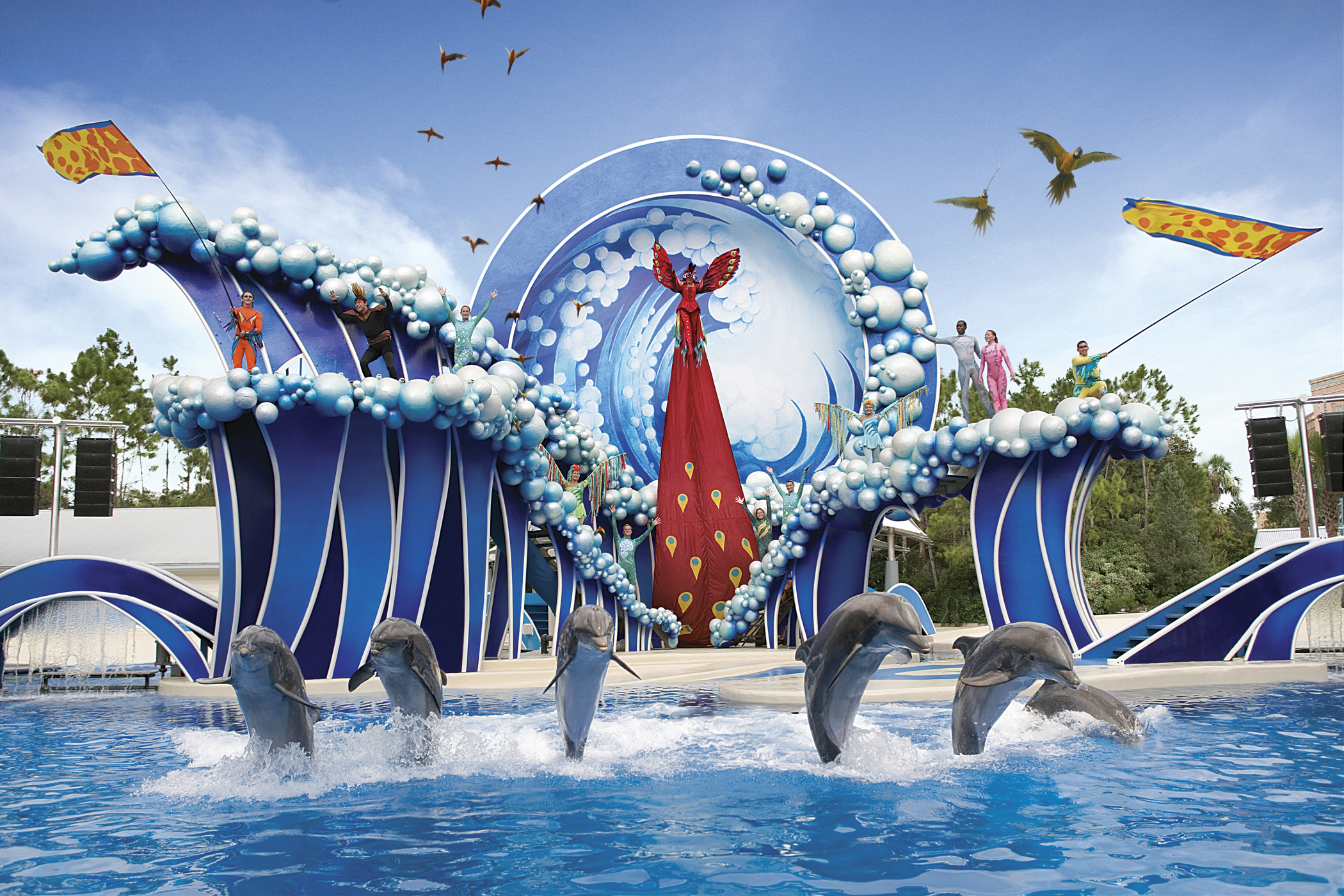
- Busch Gardens – “Katonga”
- Shedd Aquarium – “Dolphin Fantasea”
- Georgia Aquarium – “Dolphin Tales”
- Dolphinarium – “de Droom Wens”
- Indianapolis Zoo – “Dolphin Adventure”
- Animal Kingdom – “Festival of The Lion King”
- Animal Kingdom – “Finding Nemo, the Musical”
- Tokyo Disney Sea – “The Little Mermaid”
Tomorrow
So where is this headed? From all the trends that are happening, the future lies in integration of the two themes from ‘Yesterday’ and ‘Today’: Storyline and Technology.
At the very root of theater is the power of the story…that’s what brings the audience into the world of the characters, and compels them to stay involved with what’s happening on stage. That’s why shows of ‘yesterday’ have stood the test of time…the stories are just damn good. But it’s technology that leaves the iPhone/YouTube audiences of today slack-jawed. The marvel of seeing something happen on stage that you could never imagine, and that blows you out of your seat, is incredibly visceral. 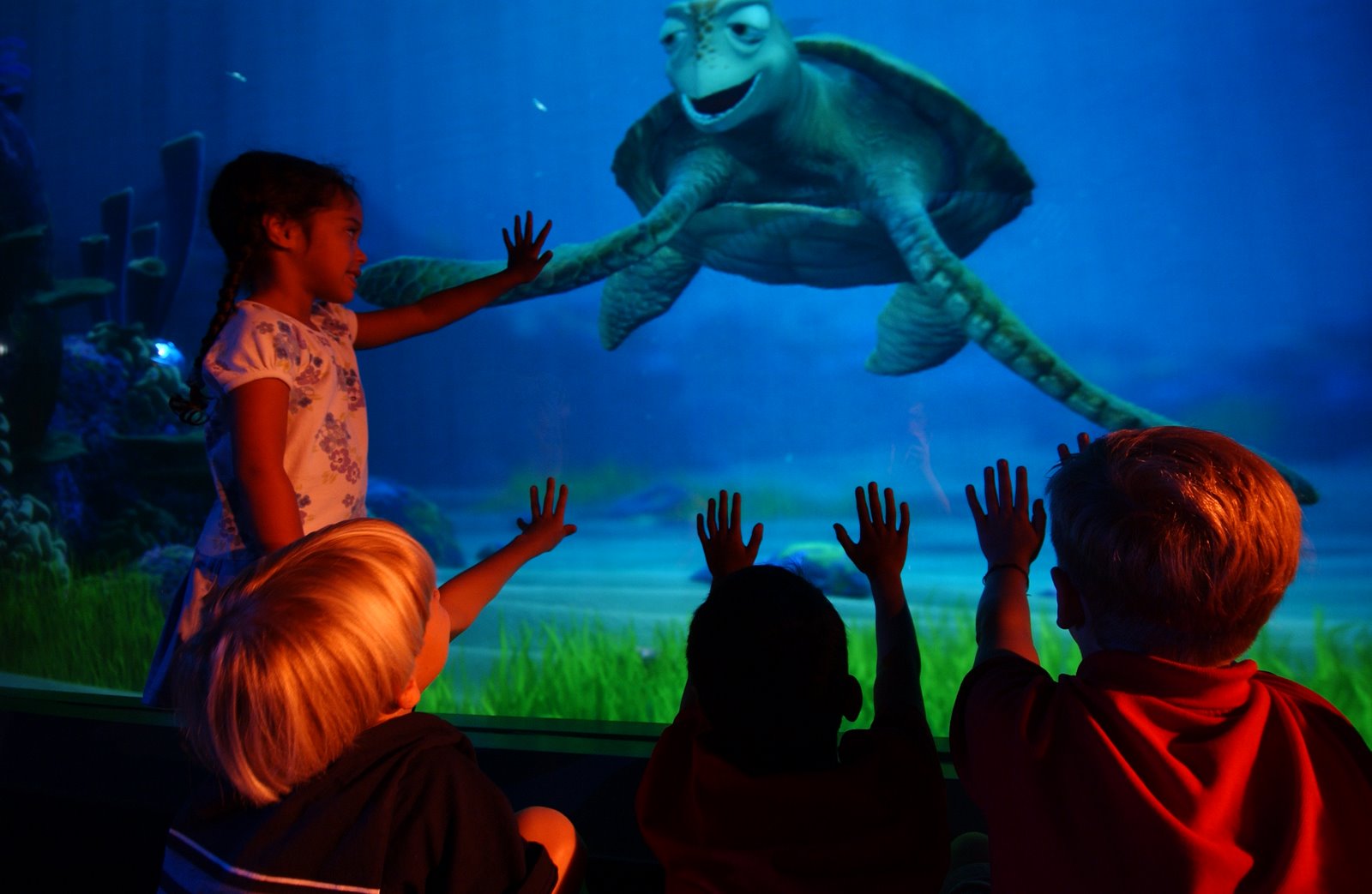
Shows that use technology to drive the storyline and make Personal Connections will transform the landscape of theater in the future. When technology becomes so integrated into the production that it almost begins to ‘disappear’, it’s the performers and their stories that become the highlighted elements. When that happens, the Story becomes the focus of the production, and personal connections begin to happen. Technology is totally integral to telling the story.
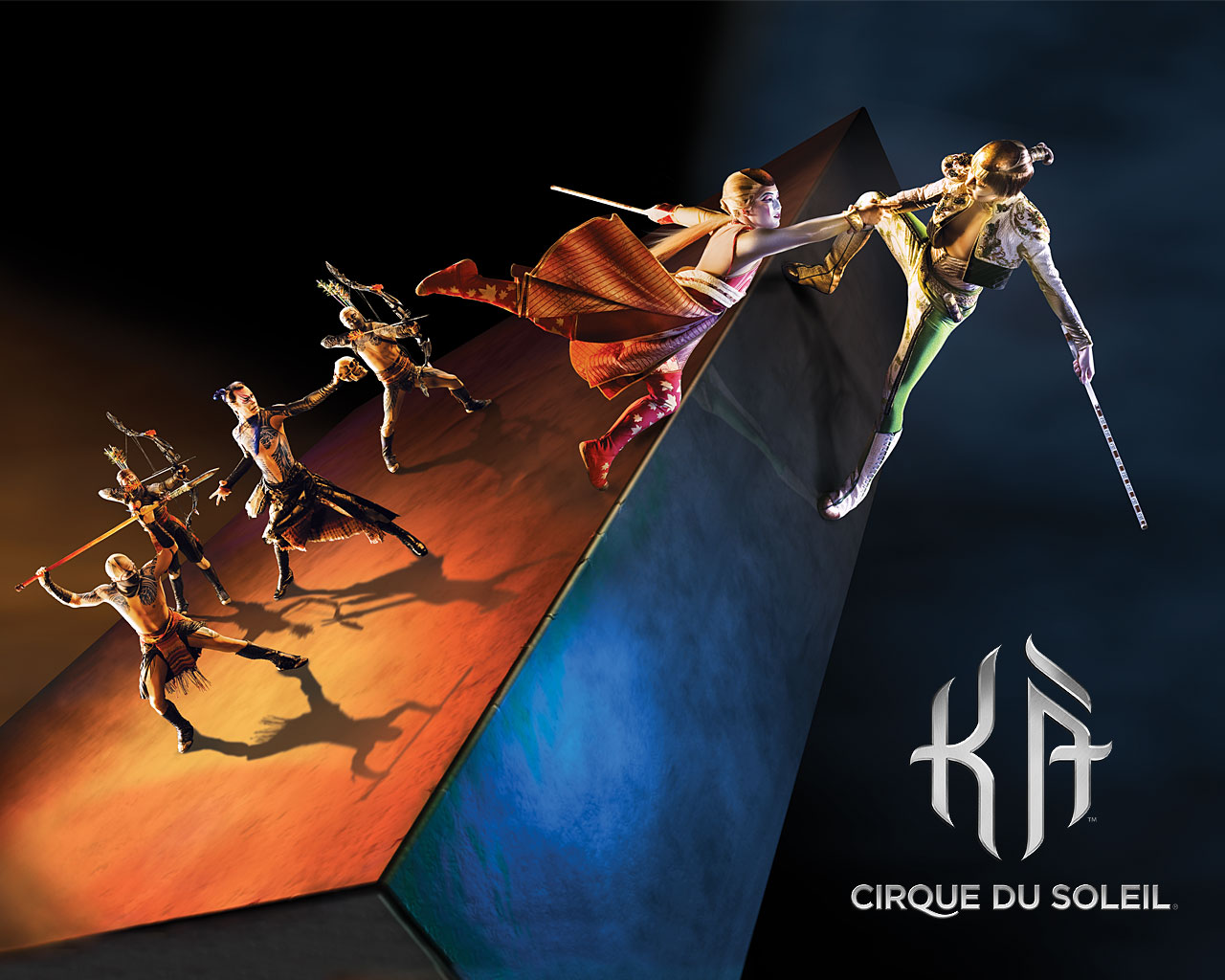 One of the best examples of this would be “Ka”, at the MGM Grand in Las Vegas which manages to use technology in spectacular ways that actually advance the storyline, and allow the actors and director to tell a story that they otherwise wouldn’t be able to tell.
One of the best examples of this would be “Ka”, at the MGM Grand in Las Vegas which manages to use technology in spectacular ways that actually advance the storyline, and allow the actors and director to tell a story that they otherwise wouldn’t be able to tell.
This is a place where the attractions industry is almost ahead of the curve when compared to theater:
- Disney – “Turtle Talk with Crush”
- San Diego Wild Animal Park - Robert the Zebra
- Disney Fantasy – “Animation Magic” show @ Animator’s Palette Restaurant
- Disney California Adventure – Mr. Potato Head @ “Toy Story Mania”
- Sentosa Island – “Crane Dance”
- SeaWorld – “Turtle Trek” & Retail Orange
 These are all attractions that use technology to tell the story in ways that create those Personal Connections with the guest. The audience has no choice but to be wrapped up in the storyline unfolding and becomes completely open to receiving the story or the message that is being delivered. And that’s how theater and show productions transcend expectations.
These are all attractions that use technology to tell the story in ways that create those Personal Connections with the guest. The audience has no choice but to be wrapped up in the storyline unfolding and becomes completely open to receiving the story or the message that is being delivered. And that’s how theater and show productions transcend expectations.
Read Part 1 of 'Entertaining the Future' here.
Dave Cooperstein is a Senior Creative Designer at PGAV Destinations, where he’s spent the past 15 years master planning zoos and aquariums, developing ride and show concepts for world-class theme parks, and designing for some of the most popular themed attractions around the country and the globe. He also writes for PGAV Destinations Blog, is an dad, architect, actor, storyteller, tech nerd, and card-carrying member of the International Jugglers’ Association.
Animal of the Month: Hippos
April showers bring May flowers, but here at DesigningZoos.com, April sea turtles bring May Nile hippos. Naturally.
The latest fact sheet focuses on everybody's favorite awkward-on-land-but-fierce-in-the-water mammal: the Nile Hippopotamus. Hippos live in groups of up to 30 animals and are extremely dangerous. They spend their days soaking in the water, but stretch their legs on the riverbanks to graze in the evenings. Because of this, DZ recommends you avoid that sunset walk along the banks of the Nile. Learn other important facts by checking out the Animal of the Month entry, here.
Happy 5th Anniversary!
Designingzoos.com Celebrates 5 Years of Exploring Zoological Design
Holy cats! I almost dropped my chai tea latte when I realized my very first post was five years ago today! So many things have changed...I've celebrated a full decade with PGAV Destinations, lived at 8 different addresses in 4 different cities, facilitated four successful master plans, participated in the opening of three new exhibit projects with two on their way soon, added a new fur baby and a collection of zoo and aquarium mugs, presented at three conferences, developed a professional development course for PGAV, became a blogger for Blooloop, wrote two novels, learned to play guitar and got a divorce. Phew! That's a lotta livin! And through it all, I managed to find time to dedicate to this little blog.
To celebrate our five years, I thought it might be fun to revisit some of the 165 posts of Designingzoos.com (that's an average of almost 1 per week!)--in case you accidentally missed one or two! And since it's our 5th anniversary, I thought I'd create some TOP 5 lists.
Top 5 Most Viewed Posts of All-Time
5. Multi-Disciplinary Integration...A Mouthful of Fun!
One of my personal favorites, this post explores a potential for the future of zoos--the merging of multiple tourism attractions into essentially a 'one stop shop' for edutainment.
4. New York Aquarium Facelift?
Perhaps because its been a long-time coming, or perhaps because it's about a beloved institution, but this post has been a popular one with those seeking insight into the forever looming redesign. After closing down due to extensive damage from Sandy, it is unclear to what extent the original plans will be instated. However, with the Aquarium now partially reopened, they've promised to move forward with its sharks exhibit.
3. Small and Sad: Dubai Zoo's Relocation on Hold Again
Similar to the NYA post, the constant promise and cancellation of this truly pathetic institution seems to be important to many readers. Rumors are always flowing about this one, and the current rumor is the project is once again a go.
2. The Next Zoo Design Revolution?
A highly controversial post generating wonderful discussion about the future of zoos. I'd argue, five years later, novelty-based design is, in fact, now on the cusp of full implementation (see Glacier Run, conceived to keep animals and people surprised and engaged; and the myriad possibilities for integration of interaction, including but not limited to digital technologies).
1. A Quick Lesson in Zoo Design History
The world must be full of history buffs! This post not only is the most viewed on DZ's site, but it has been viewed almost 3 times as much as the runner-up. Must be the Google search 'Zoos as Jails.'
Top 5 Editor's Picks
Sometimes you just gotta lay down some knowledge. This post is favorite of mine, because it explains to zoo-goers and professionals alike what that mysterious term 'master plan' means and how a successful one is created. I truly believe institutions must spend time developing a master plan, and this post tells you exactly why.
4. Video Games Get It...Do We?
Wow, this is an oldie--but a goodie! A fun read with some insight into my life outside of zoo design (and perhaps a hint into why my marriage is now defunct). Reveals how designers often look at the world--getting inspired in the most unexpected places. Although none of the design thoughts have been implemented in any way yet, tourism destinations are, in fact, starting to use game design theory to create experiences.
Storytelling is such a buzzword these days, but it truly is crucial to the development of a good exhibit experience. Once again, here I drew from an unexpected inspiration to provide insight into the art of zoo design. Also, I love Black Swan.
Not often do I broach a truly controversial subject on DZ, but the unwarranted uproar of animal activists got me all in a tizzy and I had to address it. This post is a not-so-strongly worded look at why zoo design can be a true moral and / or ethical challenge.
1. Inspiring Kids to Become Activists (AZA 2012, Day 3)
This is by far my favorite post. Not because it's ground-breaking or because it's so well written, but because the subject was so inspiring to me. I've always struggled with whether or not zoo experiences are truly making an impact on conservation, and through the development of this piece, I subsequently discovered an actual, plausible methodology to do so. Now, I just need a client willing to explore it with me...
Top 5 Site Visit Posts
5. DZ's First Zoo Review: The Mote Aquarium
My first and last zoo review. A failed experiment in site visits, this post is constructively critical with interesting tips and design insights, but perhaps a little too harsh. I do enjoy revisiting the post, though, as it reminds me how far we've come. And, I might add, how Mote has improved as well.
4. DZ Visits the Lemur Conservation Reserve
Visiting with lemurs in Florida had to make the list! What a special place helping to ensure the survival of some of my favorite species. The post includes some specific information regarding sizing for holding buildings that may come in handy.
3. Lincoln Park Zoo: Defining an Urban Zoo
One of my favorite posts as I had an epiphany about exactly how to review zoos. Subsequent to this visit, I also realized zoos come in one of four varieties: Urban Zoo, Suburban Formal, Suburban Park-like, or Natural Park-like. I like to categorize things, so this was a nice moment for me.
2. Minnesota Zoo: Be True to Yourself
Another great zoo review based more on 'the moral of the story is' rather than a critique. I also just really loved the Minnesota Zoo and have a real soft spot for zoos trying to succeed in a cold climate. Can't we get visitors to come in winter?? I think MZ's approach is just brilliant.
1. Underdogs: The Appeal of the Small Zoo
This might be a cheat since it covers multiple zoos and is one of my most recent posts, but I really do love small zoos. I love their design challenges--small site, small budget--and their big hearts. Not all small zoos are good zoos, but those doing it right, should really be congratulated.
I sure do hope you enjoyed this walk down memory lane. Cheers to everyone who's ever read the blog, especially those loyalists, to everyone who's ever helped me out with a contributing post or information, and here's to 5 more years!
If you would like to be a contributing blogger to DesigningZoos.com, please contact me using the form below. I'd like to keep a once weekly schedule, but often don't have the time, so if you have something you'd like to share regarding zoo and aquarium design, I'd love to hear from you!
[contact-form][contact-field label='Name' type='name' required='1'/][contact-field label='Email' type='email' required='1'/][contact-field label='Website' type='url'/][contact-field label='Comment' type='textarea' required='1'/][/contact-form]
Animal of the Month: Sea Turtles
Great news! I've added a page to the site dedicated to the Animal of the Month fact sheets. This month's addition: Sea Turtles!
You might know them as prototypical surfer dudes, but sea turtles are waaaaaay more than that. Did you know the largest sea turtles are the leatherbacks reaching upwards of 7' in length while the littlest ones, Kemp's Ridley, can be less than two feet! Sea turtles are mostly solitary, and females looking to lay their eggs typically return to the beaches where they were hatched. Wanna know more, like how big to a pool to make for 5 greens? Check out the Sea Turtles fact sheet here.
Aquarium Stats Resource
 A colleague just shared this amazing resource with me, so I'm passing it on to you. The Design Intelligence Almanac of Architecture and Design for 2013 lists North America's aquariums along with their size, cost and other information. A great reference for collecting bench marking data--a critical first step in many projects.
A colleague just shared this amazing resource with me, so I'm passing it on to you. The Design Intelligence Almanac of Architecture and Design for 2013 lists North America's aquariums along with their size, cost and other information. A great reference for collecting bench marking data--a critical first step in many projects.
The link is also available on our Resources page.
Interactivity and Zoos
A recent article by Wayne LaBar, the founder and principal at Alchemy Studios, outlined some of the growing trends in interactivity in museums...and got me to thinking: Are these also trends we are seeing in zoos and aquariums? If not, should they be? Certainly, interactivity in experience and educational opportunities are important aspects of zoo design. However, our industry may not lead the charge due to the simple fact that zoo visitors come to see animals primarily. Interactivity adds to the experience, elevates the excitement, and could serve as an educational platform, but in the end, guests would be happy just getting to see animals. Museums face a more difficult challenge in communicating often abstract concepts to their visitors without the benefit of a cute furry face, and thus seem to be the driving force of innovation on interactivity and interpretation in general.
Let's take a look at the current trends.
Certainly one of the largest movements occurring in children’s museums and science centers is the creation of Tinkering or Making spaces. This is a movement that originates from the work done by Make magazine and their affiliated “Maker Faires.” (www.makerfaire.com) As museums witnessed the creativity and the direct interaction that the public has with STEM (science, technology engineering and math) content, an essential need for museums to attract audience and funding, Tinkering/Maker spaces are popping up in many places. A Tinkering space is a place where visitors are allowed to build, create and tinker with low-end technology, use real tools and explore the concept of making something. These are usually staffed spaces although some are trying to explore minimizing staff engagement. Often, special events, fairs and other programs are being held in connection with these spaces. A key aspect of this is that these spaces do not require extensive design and development schedules and costs. They are a marriage of exhibit and program, where the activity is more important than the environment. The Exploratorium with their Tinkering Studio (blogs.exploratorium.edu/tinkering/) , New York Hall of Science who hosts the NYC Maker Faire and issued a report (www.nysci.org/learn/research/maker_faire_workshop) , and the Pittsburgh Children’s Museum MAKESHOP (pittsburghkids.org/exhibits/makeshop) are some of the leaders in this endeavor.
This one is somewhat limited in zoos and aquariums. I've heard about learning to basketweave or make jewelry and enrichment days where guests can make items for the animals (discussed further below), but generally the act of 'making' isn't the first thing that comes to mind when discussing the animal world. However, it is an interesting topic in that part of our challenge in zoo design is to create empathy. Many animals are, in fact, 'makers.' Birds build all sorts of nests in a variety of sizes, shapes and materials. Beavers make elaborate dams. Primates make and use tools. Even fish make nests! Why not create stations where these things can be experienced and explored in zoos?
Collaborative Exhibits & Events
In the constant search for innovative (yet budget-conscious) exhibits and interactivity, museums are increasingly looking to create ways in which people can interact by engaging with artists, groups and community organizations. Exhibitions based on this approach tend to have interactivity that may be more experimental or short-term, perhaps built around a weekend event or happening. A benefit of this type of low-impact interactivity is the opportunity to try things that are different and not necessarily built to the fabrication and durability standards that would define more traditional exhibits. Additionally, by reflecting engagement with community groups and other organizations, the exhibit becomes more social, and the social networks of these organizations, both physical and electronic, become engaged with the exhibits and potentially become part of the exhibitions themselves. One place exploring this direction is the Santa Cruz Museum of Art and History. Check out their event at (www.santacruzmah.org/events/) and read Nina Simon’s article in the latest NAME Exhibitionist issue.
The growing trend of Enrichment Days are what comes to mind in relation to collaborative events. Guests are encouraged to create and facilitate enrichment throughout the zoo, and in doing so, interact with keepers, docents and animals at a level not experienced on a normal trip to the zoo. I'm very curious about the effect of these special days as they exist now on visitor experience and how we can build from the basic idea to expand in a more socially engaging way as indicated by LaBar. Other events such as the now commonplace food / beer / music fundraising festivals (oftentimes called Zoofari) linger on the edge of being a collaborative event, but lack an integrated conservation / education message that could be leveraged during these gatherings.
New Interfaces
Certainly, an area that piques everyone’s interest in the interactivity field is devising new ways for people to engage with digital content or digital displays through more physical interfaces. We have seen a move away from the idea of keyboard-and-mouse to touchscreen to touch tables and now Kinect or Kinect-like interfaces. This outlines an evolution of the interface becoming more and more physical, more fully-body engaging and with more seamless physical/virtual experience. Over the past year, we have seen interest in new and innovative ways to engage people physically but also marrying that with digital content. Examples include the “Firewall” by Aaron Sherwood created in collaboration with Michael Allison, “Water Light Graffiti” done under the Digitalarti Artlab by the artist Antonin Fourneau, or the work done by ART+COM. In part, this is driven by the need for museums to provide experiences that cannot be duplicated at home. The interface advances also reflect the evolution of museum experiences moving into the home. These marriages of art, computer, physical world and content create interactivity and experiences that can’t be duplicated on your Xbox.
more fully-body engaging and with more seamless physical/virtual experience. Over the past year, we have seen interest in new and innovative ways to engage people physically but also marrying that with digital content. Examples include the “Firewall” by Aaron Sherwood created in collaboration with Michael Allison, “Water Light Graffiti” done under the Digitalarti Artlab by the artist Antonin Fourneau, or the work done by ART+COM. In part, this is driven by the need for museums to provide experiences that cannot be duplicated at home. The interface advances also reflect the evolution of museum experiences moving into the home. These marriages of art, computer, physical world and content create interactivity and experiences that can’t be duplicated on your Xbox.
 Interfaces are all over the map in zoos and aquariums. Partially due to the lack of budget and partially due to durability issues, zoos and aquariums vary in their usage of technology. Aquariums, with their somewhat controlled indoor environment, seem to be much more willing to embrace such things as touchscreens (seen in Georgia Aquarium as far back as 2005) and full-body Kinect-like interfaces. As technology moves forward--driving prices down and durability up, I am confident we'll see an increase in these creative interfaces not only for interpretation at zoos and aquariums but also as part of the general guest experience.
Interfaces are all over the map in zoos and aquariums. Partially due to the lack of budget and partially due to durability issues, zoos and aquariums vary in their usage of technology. Aquariums, with their somewhat controlled indoor environment, seem to be much more willing to embrace such things as touchscreens (seen in Georgia Aquarium as far back as 2005) and full-body Kinect-like interfaces. As technology moves forward--driving prices down and durability up, I am confident we'll see an increase in these creative interfaces not only for interpretation at zoos and aquariums but also as part of the general guest experience.
And what about the interactivity of animals and people? This has been a growing trend in zoos and aquariums over the past decade with the increasing popularity of swim-with dolphins and sea lions, lorikeet nectar feeding and ray touches among many others. These 'responsible' interactions are only going to become more prevalent.
Mobile Individuality
The world of mobile computing has been transformed over the past five years with the increasing size of and sophistication of smart phones, the acceptance of tablets, and the growing ubiquity of internet access through cellular plans or freely available wifi. Museums were quick to adopt these technologies as part of the visitor experience, and now they have become almost a necessary part of interactivity strategy for an exhibition or institution. Despite this, the field still struggles with what is the best way to use these technologies and how to integrate them into the exhibition form. For some collections-based exhibitions, they may be the principle interactivity, while a device at an interactive exhibition might actually be an obstacle to visitor experience. As our field continues to explore how to best apply new technologies, some of the more exciting experiments relate to how these devices might personalize everyone’s experience. For example, work is ongoing on enhancing personal instruction as part of school trips, accessing data through NFC technology, and integrating augmented reality into an experience. This personalization will certainly be another ongoing trend in interactivity over the coming year and beyond. Check out work being done at the Minnesota Historical Society in their Education Department with their new exhibition Then Now Wow (minnesotahistorycenter.org/exhibits/then-now-wow) with school groups talked about , The Australian Museum and the work lead by Lynda Kelly (australianmuseum.net.au/staff/lynda-kelly) and the Science Museum of London and their augmented reality with James May (www.sciencemuseum.org.uk/visitmuseum/jamesmay).
Similar to the interface issue, mobile media is on the cusp of exploding onto the zoo and aquarium front. Most zoos acknowledge the desire to tap into this resource--the ability to enhance a visitor's experience through augmented reality as well as provide deeper educational options to those that are interested in lieu of physical graphics / signage--but are limited by the steep initial cost of development. The upside to the cost, however, is once the initial programs are developed, costs are limited to content creation--the same as would be with any other technology, and the operational costs will be much less than most conventional (physical) content delivery methods. Plus, content can be changed out immediately for a fresh and repeatable experience.
zoos acknowledge the desire to tap into this resource--the ability to enhance a visitor's experience through augmented reality as well as provide deeper educational options to those that are interested in lieu of physical graphics / signage--but are limited by the steep initial cost of development. The upside to the cost, however, is once the initial programs are developed, costs are limited to content creation--the same as would be with any other technology, and the operational costs will be much less than most conventional (physical) content delivery methods. Plus, content can be changed out immediately for a fresh and repeatable experience.
Visitors: An Overlooked Species at the Zoo
By Eileen Ostermeier
Zoos have long been at the forefront of animal research, but only recently have they started conducting studies on another important but relatively overlooked species: their visitors. For decades, museums, science centers, theme parks and National Parks have been studying their visitors – long before the practice was seen as useful in the zoo world. Yet in this age of information, with competing attractions vying for attention, visitor studies are more useful than ever. Moreover, ever-accelerating technological advances and new methods of gathering and analyzing data have made it possible for Zoos to gain a greater understanding of their visitors than ever before. But more research on visitors is needed, generated not just by Zoos and their umbrella organizations (like the AZA) but also by zoo designers themselves.
Why Conduct Visitor Studies?
Why should zoos and related organizations study zoo visitors? Organizations (like the AZA and EAZA) that are dedicated to the advancement of zoos should use visitor studies to evaluate whether and how zoos are meeting the broad goals of conservation, research, education and recreation. The AZA recently conducted a broad, multi-institutional study, Why Zoos & Aquariums Matter: Assessing the Impact of a Visit to a Zoo or Aquarium (AZA, 2007), which focused on the impact of zoos on conservation knowledge, attitudes and behavior. In essence, such studies help justify the existence of zoos. Individual zoos, meanwhile, should study visitors to measure the impact of their messaging and to evaluate whether their institution is meeting its stated goals. And from a practical standpoint, zoos could use visitor studies to increase revenue generation and to improve the economics of zoo business.
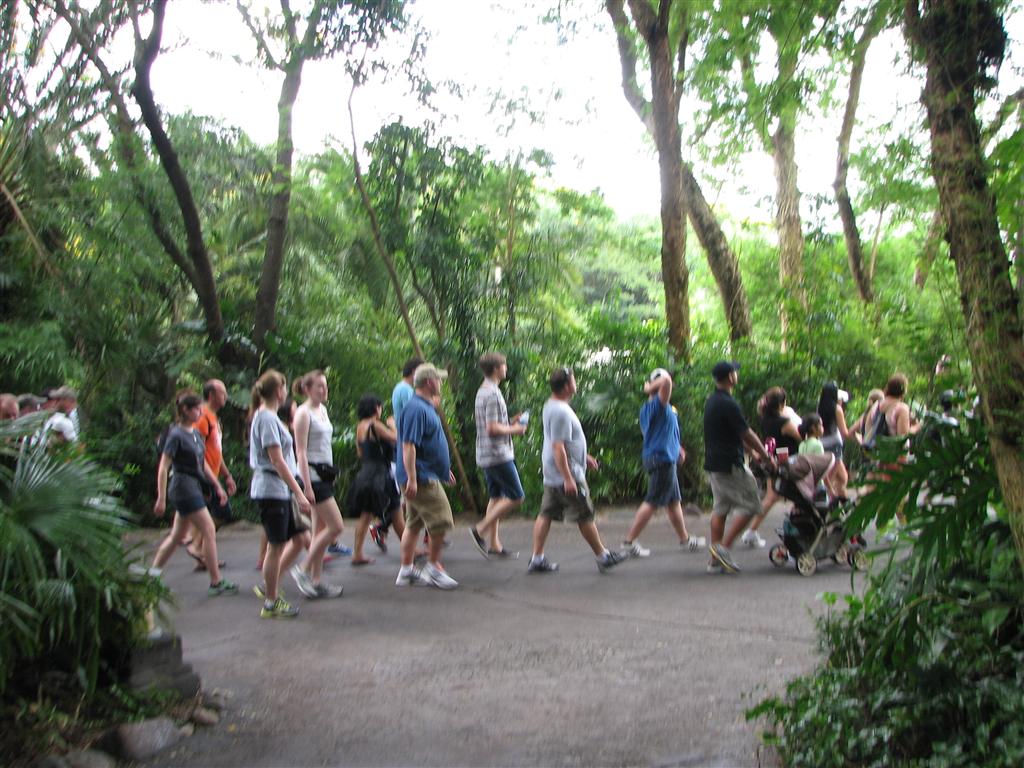 But what about the role of zoo designers? Traditionally, most visitor research has been conducted by the institutions themselves. Recently, however, designers are taking a more active role in studying how visitors behave in and respond to zoo exhibits. PGAV Destinations, for example has not only conducted market research on zoo visitors but has also sent its designers into the field to conduct timing and tracking studies on zoo visitors. Fueled with hard data and facts from their studies, designers are making more-informed decisions about exhibit design. Moreover, such studies can inform all stages of design, from early concept work and master planning to the detailed design of specific exhibit elements. Visitor studies allow designers to more-fully understand the impact of various factors on visitor behavior. For example: designers might test the impact of path width on crowd movements and density, or the correlation between the length of a viewing window and length of stay, and so on. Visitor studies also help set realistic expectations about visitor response to new exhibits (dwell time, level of engagement, etc.). In fact, the predictive power of visitor studies is arguably their most useful benefit. Visitor studies can be used not only to test design decisions and to determine the relative success of existing exhibits but also (and perhaps more importantly) to inform the design of future exhibits.
But what about the role of zoo designers? Traditionally, most visitor research has been conducted by the institutions themselves. Recently, however, designers are taking a more active role in studying how visitors behave in and respond to zoo exhibits. PGAV Destinations, for example has not only conducted market research on zoo visitors but has also sent its designers into the field to conduct timing and tracking studies on zoo visitors. Fueled with hard data and facts from their studies, designers are making more-informed decisions about exhibit design. Moreover, such studies can inform all stages of design, from early concept work and master planning to the detailed design of specific exhibit elements. Visitor studies allow designers to more-fully understand the impact of various factors on visitor behavior. For example: designers might test the impact of path width on crowd movements and density, or the correlation between the length of a viewing window and length of stay, and so on. Visitor studies also help set realistic expectations about visitor response to new exhibits (dwell time, level of engagement, etc.). In fact, the predictive power of visitor studies is arguably their most useful benefit. Visitor studies can be used not only to test design decisions and to determine the relative success of existing exhibits but also (and perhaps more importantly) to inform the design of future exhibits.
What Studies Exist?
 Who can we learn from? Historically, museums, science centers and National Parks have conducted detailed visitor studies. In fact, much of the current information regarding visitor behavior is taken from the museum world, where researchers are constantly evaluating the success of their exhibitions. Further afield, researchers should learn not only from the work of traditional research outlets (like educational psychology, sociology, and environmental science) but also from more unexpected disciplines (like marketing and consumer research). As an example: one researcher noted the similarity of zoo visitor studies to his own research on shopping behavior in grocery stores (Yalowitz & Bronnenkant, 2009). Finally, Theme Parks and similar entertainment destinations – with particular strengths in quantifying visitor flow, tracking & timing, and revenue generation – are a vast and relatively untapped resource in the Zoo world.
Who can we learn from? Historically, museums, science centers and National Parks have conducted detailed visitor studies. In fact, much of the current information regarding visitor behavior is taken from the museum world, where researchers are constantly evaluating the success of their exhibitions. Further afield, researchers should learn not only from the work of traditional research outlets (like educational psychology, sociology, and environmental science) but also from more unexpected disciplines (like marketing and consumer research). As an example: one researcher noted the similarity of zoo visitor studies to his own research on shopping behavior in grocery stores (Yalowitz & Bronnenkant, 2009). Finally, Theme Parks and similar entertainment destinations – with particular strengths in quantifying visitor flow, tracking & timing, and revenue generation – are a vast and relatively untapped resource in the Zoo world.
In the past couple of decades, Zoos have started conducting their own visitor studies. Organizations have begun compiling resources and developing literature reviews, like Visitor Learning in Zoos and Aquariums: A Literature Review (Dierking, Lynn, et al, 2001-2002). Of particular note is a recent, comprehensive, multi-institutional and cross-discipline effort by the EAZA to compile a list of relevant visitor studies: Looking at People Looking at Animals: An International Bibliography on Visitor Experience Studies and Exhibit Evaluation in Zoos and Aquariums (EAZA Education Committee, 2011). A particular strength of current studies is the focus on interpretation, education, and the impact of conservation messaging on zoo visitors.
What Studies Should Be Conducted?
Because of their unique position in the Zoo world, groups like the AZA and EAZA should be conducting visitor studies that play to their strengths as broad, multi-institutional organizations. Such groups should conduct more comprehensive, nationwide or international surveys that bridge the gaps between separate Zoos. These should include literature reviews, bibliographies, and cross-institutional visitor studies. Such studies would be particularly useful for comparing the relative success of exhibits at different institutions and for identifying key trends across several Zoos. They may also serve to establish methodological standards and to encourage Zoos to conduct more detailed studies of their own institutions.
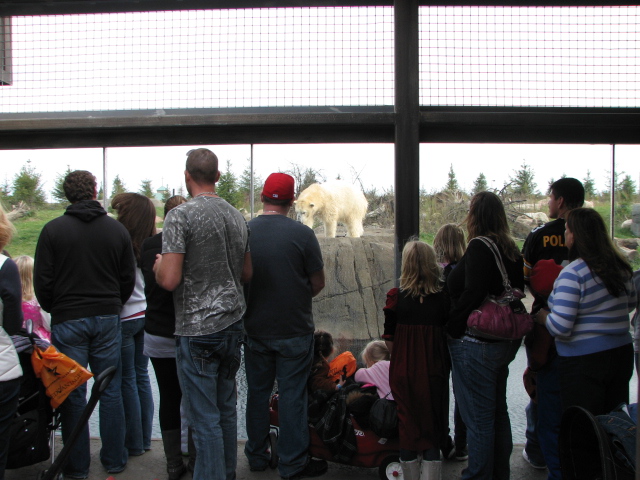 Zoos, meanwhile, should be harvesting a wealth of information about their visitors, with a particular focus on the unique circumstances at their specific institution. It is important for Zoos to understand what makes their zoo different from others – variables ranging from the demographic make-up of its visitors and its region to the institution’s focus, goals, strengths and challenges. What works at one Zoo (e.g. a new polar bear exhibit that draws new visitors by the thousands) does not always work at another. Uniquely positioned to study their visitors, Zoos should use all the resources at their disposal – from the ability to track operational data like hourly attendance and revenue to the dozens of staff and volunteers eager to help.
Zoos, meanwhile, should be harvesting a wealth of information about their visitors, with a particular focus on the unique circumstances at their specific institution. It is important for Zoos to understand what makes their zoo different from others – variables ranging from the demographic make-up of its visitors and its region to the institution’s focus, goals, strengths and challenges. What works at one Zoo (e.g. a new polar bear exhibit that draws new visitors by the thousands) does not always work at another. Uniquely positioned to study their visitors, Zoos should use all the resources at their disposal – from the ability to track operational data like hourly attendance and revenue to the dozens of staff and volunteers eager to help.
But Zoos and their umbrella organizations are not the only groups who should study zoo visitors. Zoo designers should be conducting visitor studies as well. Such studies should be targeted and detailed, focusing on a specific factor, variable or design criteria the zoo designers wish to better understand through data and facts. For example, Zoo designers may wish to study the impact of exhibit temperature (say, at indoor cold-weather penguin exhibits) on dwell time, level of engagement, and walking speed. Or they may study the impact of the size of an underwater viewing window on the length of stay and the number of viewers the window can reasonably accommodate at any given time. Likewise for other factors like water clarity, animal activity, path width, type of interpretive elements, level of cultural theming, and the like. Studying the impact of specific design variables should inform future design decisions and lead to better understanding of what makes an exhibit successful. Tracking and timing studies – those that focus on factors like dwell time, crowd flow, level of engagement, etc. – are particularly useful for designers. But few zoo designers are currently studying visitors. Those that are have a distinct advantage over their counterparts.
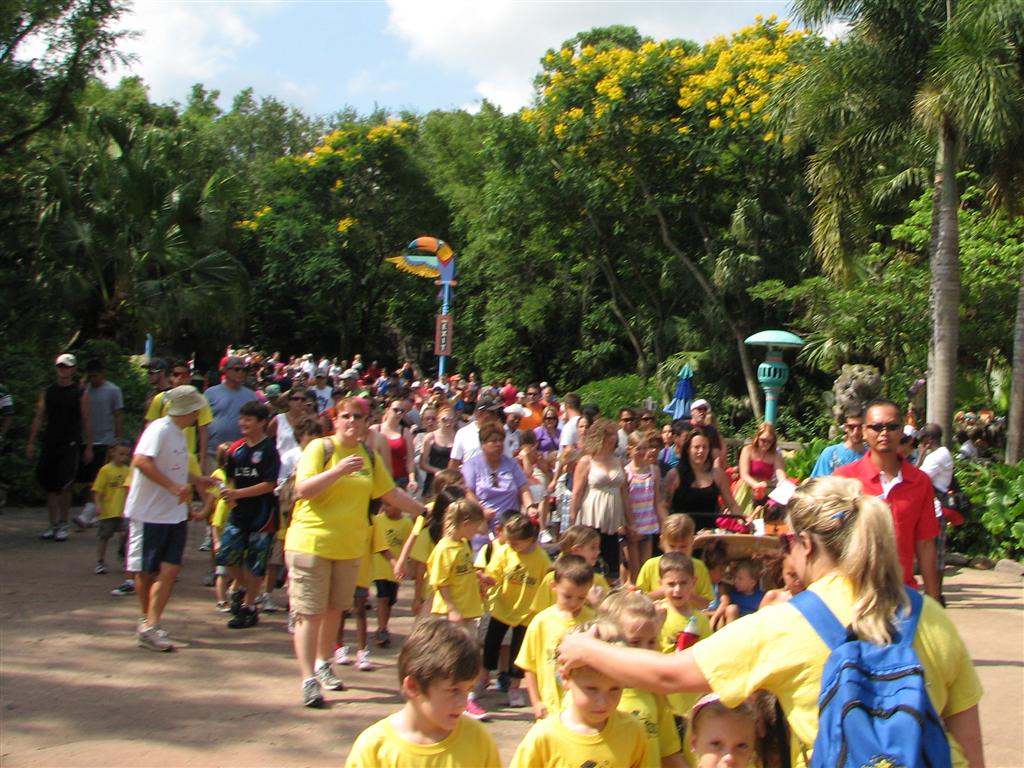 Issues
Issues
Despite the recent insurgence of zoo visitor studies, the field is plagued by a number of issues. Studies are done sporadically by separate institutions, which are sometimes reluctant to share their results. Those that are published are often difficult to compare, due to inconsistent criteria, small sample sizes, and idiosyncratic results (usually resulting from poor study design). This is particularly problematic when trying to evaluate the relative success of different exhibits at different institutions. Fortunately, several researchers have made recommendations regarding methodology and indicators for comparison – including dwell time and the Sweep Rate Index (SRI), which standardizes for different exhibit sizes (Yalowitz & Bronnenkant, 2009).
A bigger issue may be that most of the current research is focused on visitor education, to the neglect of other, important areas. Though a lofty goal, Zoo visitor research should focus on more than just conservation messaging. Besides asking what their visitors are learning, Zoos should also ask questions like: “How can we improve the visitor experience beyond communicating our message? How well are we entertaining as well as educating? Are we generating sufficient revenue to meet our future goals?” Revenue generation, though perhaps less esteemed than interpretation and messaging, is absolutely essential for the Zoo to meet its other goals. Detailed visitor studies can inform everything, from dining menus and the location of food carts or retail (e.g. was that gift shop at the end of the exhibit useful?), to opportunities for high-end experiences, like tours and one-on-one interactive experiences with animals. And most importantly, Zoos should be asking “What’s next?” and looking to the future, of not just their institution but of zoo design itself.
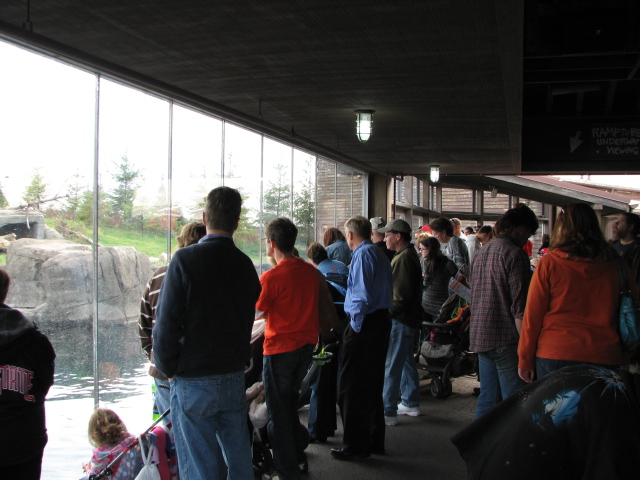 Trends and the Future of Visitor Studies
Trends and the Future of Visitor Studies
Researchers of visitor behavior should look to the future for new ideas, including new methods of collecting and analyzing data. Technology is increasingly being used as a tool for understanding visitor behavior. Researchers can now use videotaping, hand-held digital devices or software systems for recording and analyzing data (including the Noldus Observer and the Museum Experience Recorder system). Taking this a step further, the Walt Disney Company has reportedly invested more than $1 billion on its so-called “Next Generation Experience” project, a technology and marketing initiative focused on detailed visitor tracking and data-mining. Soon, all visitors to Walt Disney World will wear RFID bracelets throughout the resort, allowing the company to collect detailed data on individual spending habits, crowd movements and more – a literal “marketing bonanza” (Garcia, 2013). What’s next? Eye-tracking software to analyze visitor interest (Ross & Wagner, 2012), or personalized itineraries that visitors can create on digital mobile devices? The possibilities are endless.
Ultimately, designers should take a much greater role in conducting visitor studies. Designers may think they know what constitutes good zoo design, but they should confirm their assumptions and back them up with data and facts. The best way to do this is to conduct detailed studies of zoo visitors and factors that impact their designs. There is enormous potential to benefit from the wealth of information out there, just waiting to be collected, analyzed and understood. Designers should take the lead in studying the visitors that come to their Zoos.
Bibliography
Association of Zoos & Aquariums. "Why Zoos & Aquariums Matter: Assessing the Impact of a Visit to a Zoo or Aquarium." 2007. Association of Zoos & Aquariums. Web. 27 December 2012. <http://www.aza.org/uploadedFiles/Education/why_zoos_matter.pdf>.
Dierking, Lynn, et al. "Visitor Learning in Zoos and Aquariums: A Literature Review." 2001-2002. International Zoo Educators Association. Web. 27 December 2012. <http://www.izea.net/education/AZA-Visitor_Leaning_in_Zoos_Aquraiums_Literature_Review.pdf>.
EAZA Education Committee. "Looking at People Looking at Animals: An International Bibliography on Visitor Experience Studies and Exhibit Evaluation in Zoos and Aquariums." February 2011. European Association of Zoos and Aquaria. Web. 27 December 2012. <http://www.eaza.net/activities/education/Documents/2011-02-10%20Visitor%20Studies%20Bibliography%20%20V0.3.pdf>.
Francis, David, Maggie Esson and Andrew Moss. "Following Visitors and What It Tells Us: The Use of Visitor Tracking to Evaluate ‘Spirit of the Jaguar’ at Chester Zoo." 2007. International Zoo Educators Association. Web. 27 December 2012. <http://www.izea.net/education/journal%202007%20following%20visitors%20and%20what%20it%20tells%20us.pdf>.
Garcia, Jason. "Orlando Sentinel." 2013 7 January. Disney reveals NextGen details with 'MyMagic+'. Web. 7 January 2013. <http://www.orlandosentinel.com/the-daily-disney/os-disney-reveals-next-gen-details-20130107,0,6117836.story>.
Ridgway, Stephanie Clark, Margaret Livingston and Steven E. Smith. "Visitor Behavior In Zoo Exhibits With Underwater Viewing." Visitor Studies Today 2005: 1, 3-10. Web. 27 December 2012. <http://ag.arizona.edu/research/azalfalf/pdf_pubs/zoo_visitor_behavior.pdf>.
Ross, Steve and Kathleen Wagner. "Visitor Behavior in Zoos and Aquariums." Connect: Association of Zoos & Aquariums May 2012: 42-43. Print.
Yalowitz, Steven S. and Kerry Bronnenkant. "Timing and Tracking: Unlocking Visitor Behavior." Visitor Studies 12.1 (2009): 47-64. Web. 2012 27 December. <http://www.tandfonline.com/doi/pdf/10.1080/10645570902769134>.
Eileen Ostermeier studied architecture at Washington University in St. Louis and later received her Masters in Landscape Architecture from The Ohio State University, where she focused on habitat design and restoration. She has been with PGAV for 4 years and is currently working on Safari Africa! at the Columbus Zoo. eileen.ostermeier@pgav.com
November Animal of the Month: Chimps
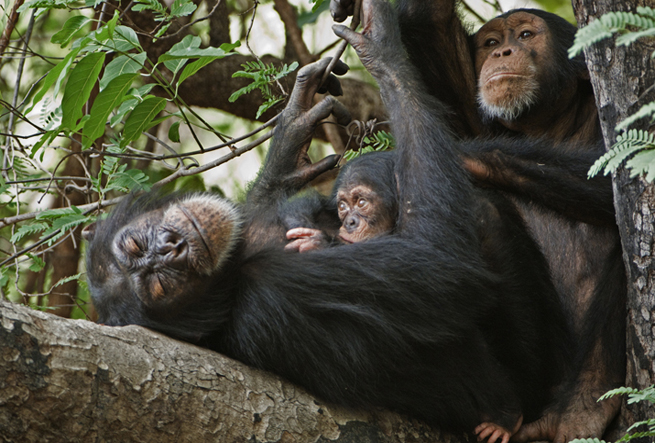 Ah, those gregarious primates who remind us what it means to be human. They're the perfect capstone species to the year. (No December AotM) Did you know chimps breed throughout the year--whenever the urge strikes? Did you know they are altruist and have been seen grooming and cradling rocks? Find out more--including how large to design a day room and which exhibits to benchmark--by checking out the latest edition of the Animal of the Month fact sheet.
Contact me to receive this and all upcoming fact sheets directly and automatically.
Ah, those gregarious primates who remind us what it means to be human. They're the perfect capstone species to the year. (No December AotM) Did you know chimps breed throughout the year--whenever the urge strikes? Did you know they are altruist and have been seen grooming and cradling rocks? Find out more--including how large to design a day room and which exhibits to benchmark--by checking out the latest edition of the Animal of the Month fact sheet.
Contact me to receive this and all upcoming fact sheets directly and automatically.
Design Resource No Longer Available
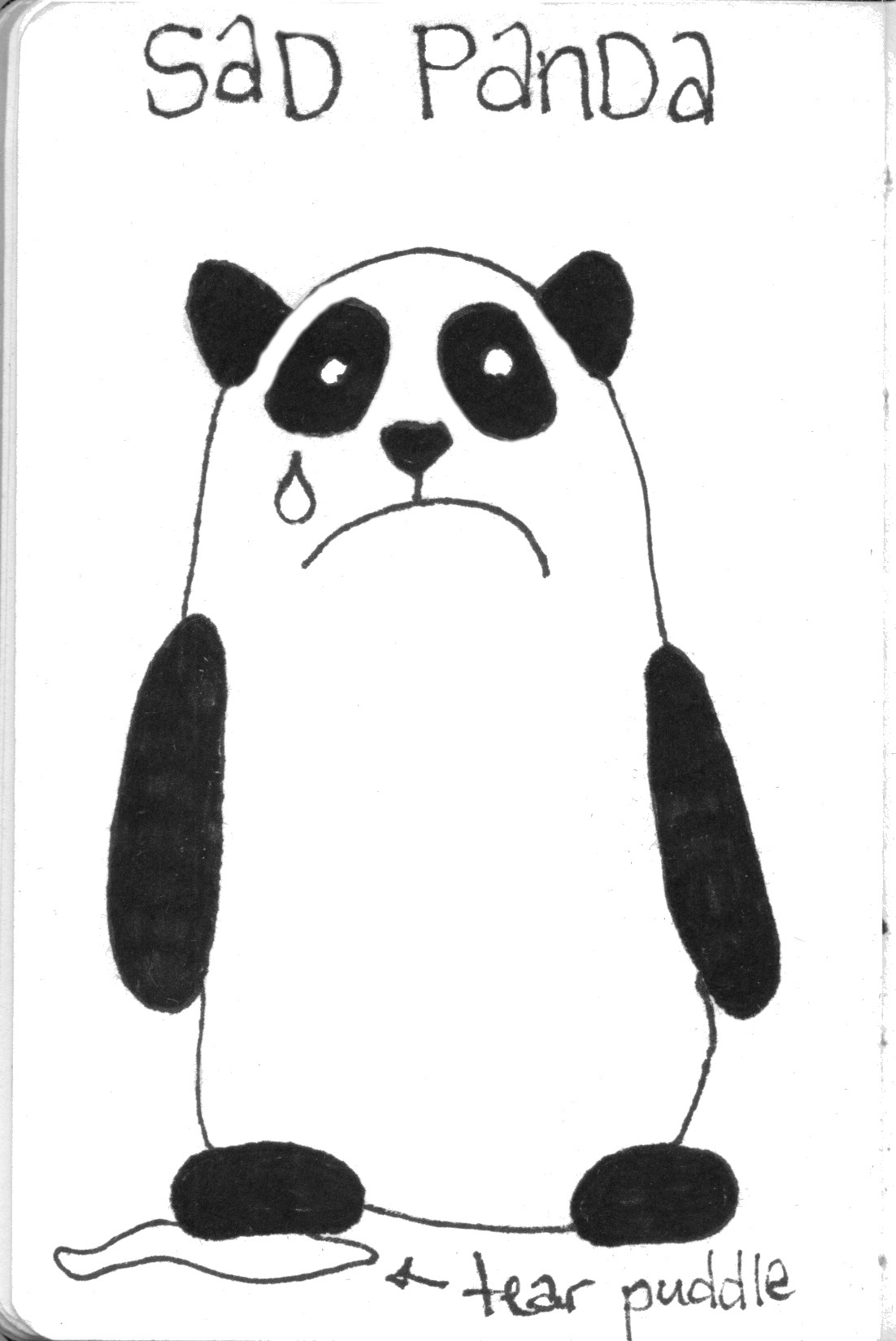 Today, to my dismay, I discovered the WAZA website has been updated to remove all sizing and enrichment recommendations from the once-excellent Virtual Zoo. This resource was great as it collected recommendations from around the world, including AZA and EAZA resources into one simple reference. I'm not sure why the information was deleted, but assume it was due to the work involved in collecting and maintaining the data. If anyone can direct us designers to another resource, especially for the oft overlooked non-mammalian species, please let me know! What a sad day for me...
Today, to my dismay, I discovered the WAZA website has been updated to remove all sizing and enrichment recommendations from the once-excellent Virtual Zoo. This resource was great as it collected recommendations from around the world, including AZA and EAZA resources into one simple reference. I'm not sure why the information was deleted, but assume it was due to the work involved in collecting and maintaining the data. If anyone can direct us designers to another resource, especially for the oft overlooked non-mammalian species, please let me know! What a sad day for me...
Why Master Plan?
A few months ago, I visited with a potential client--who will remain unnamed-- dealing with a complicated case of left-overs. An older institution with aging and non-immersive exhibits, a disconnected and fragmented campus, and plans in the works for a sister institution. As we toured the facilities, the director, aware of experiential and logistical issues of his multi-faceted campus, asked how I could help with one specific exhibit. I smiled and indulged him in some top-of-the-head design suggestions about visibility and theming, but ended by asking, “And what are your plans for this space?” (indicating the mostly unused plaza surrounding the exhibit). “Well, we’re not sure. We want to change it all. Eventually.”
I dropped my notebook to the floor and screamed, “Stop! Don’t touch this exhibit until you develop a master plan!” I didn’t really do that. But I wanted to.
What I did do was explain the importance of master planning. Master plans are essential to the long-term success of zoos and aquariums. They are tools for exploring and pinpointing issues. They are compasses to keep your staff on track. They are road maps for the future.
But why, you ask. Why do we master plan?
To answer the why, let’s look at the how. Generally, master plans are led and completed by zoo designers, and should include three parts: Analysis, Product Development and Implementation Planning. Each phase sets the stage for the next.
In Analysis, we look at as many aspects of the park as possible, from your market and penetration to building condition. We pour over visitor surveys, attendance and revenue records. We inspect each exhibit and every building. We talk to staff from maintenance to keepers to administrators. We gather and analyze, zeroing in on things that you’re doing well and things that are issues. At the end of Analysis, we create a set of overriding Goals and Strategies for the extent of the master plan.
The Goals are big. Increase attendance. Become world leaders in conservation. Educate our guests. The Strategies are much more specific—and in direct response to the Analysis.
For example, if our goal is to create a financially sustainable organization, some strategies may include adding a new dining facility, increasing appeal of special events rental facilities, or creating budget-friendly new attractions.
These Goals and Strategies inform and guide the Product Development process; they pinpoint specific tasks to be achieved, specific projects to be created. And in the Product Development stage, we delve into these projects. We brainstorm and explore multiple options for projects—creating many more ideas than what we could feasibly achieve in the master plan period. With these options in hand, we systematically evaluate each through the filter of the master plan goals—which often includes market testing. At the end of the Product Development phase, we’ll have a list of selected projects with conceptual storylines, plans, sketches, imagery and rough estimates.
With these projects defined, we finish the master plan by completing an Implementation plan. This phase allows us to understand ‘how’ to get these projects instated. We create a phasing plan—when will each project be rolled out?—and a funding plan—how much capital will the zoo need to raise by what dates? Finally, we create illustrative site plans defining what the zoo will look like at determined intervals (ie every 1, 3, or 5 years).
At the end, the zoo will walk away with a comprehensive plan to achieve specific goals over a set timeline. Generally, master plans plan 10-15 years out. Of course, things come up and even the best laid plans get waylaid. These surprises are exactly why master plans are so important. Because we spent so much time creating the guiding Goals and Strategies, any new issue that comes up should be tackled through the same lenses as the planned projects. Of course, Goals and Strategies may be adjusted over the years, but if the zoo finds their strategic outlook has changed dramatically from the master plan…it’s time to master plan again!
“The Master Plan gave us direction to accomplish these goals and puts us on the path to creating a more enjoyable, interactive and rich experience for the future,” said Stuart Strahl, director of Brookfield Zoo.
Finally, master plans are critical for zoos to move forward—logistically. Through a master plan, zoos have specific projects to show off, to fundraise for. The master plan provides essential visual and verbal descriptions that get the market excited and motivated to give. Not only that, the master plan is a concise definition of who the zoo is (brand today), and where they want to go (brand tomorrow). It’s a great handbook for employees, and a wonderful platform for marketing.
If your zoo doesn't have a master plan, or its master plan is out of date, the best time to start a new one is right now.
October Animal of the Month: Flamingo
 Why does a flamingo stand on one leg? Because if he lifted both, he'd fall over! This is not included in the October Animal of the Month fact sheet about the many species of flamingo, but a lot of other great information is. Like, how flamingos build their nests, and how deep to build your next flamingo pool.
Why does a flamingo stand on one leg? Because if he lifted both, he'd fall over! This is not included in the October Animal of the Month fact sheet about the many species of flamingo, but a lot of other great information is. Like, how flamingos build their nests, and how deep to build your next flamingo pool.
If you'd like to receive this and all of the upcoming Animal of the Month fact sheets, contact me directly. I'll get you signed up to receive them.
Historic Buildings: Obstacles or Opportunities?
By Russell Ploutz Historic zoo buildings are a growing dilemma for zoos, especially older zoos. The historic buildings don’t meet current design standards for animals, but laws require preserve of culturally significant structures. Are these buildings limiting the potential of zoos or seeds for innovation?
The subject of preservation of historic buildings has been on my mind lately after talking with a student researching education at the Buenos Aires Zoo. Many of the zoo’s design challenges are complicated by the numerous historical structures, monuments and paths designated for preservation in the 124 year old zoo. In thinking about the challenges the historical buildings present the zoo, I considered the historic buildings as an opportunity instead of a problem.
The first thought I had was a general design strategy that inverts the current spaces for animals and visitors. The concept designates the buildings and areas for preservation into spaces for visitors while the current people spaces are redesigned for animals. The existing visitor area is freed for animals and exhibits with space for animal enclosures and new support buildings. Since the buildings are easier to renovate for visitor uses than animals, the design strategy may be a more feasible solution than renovating the buildings for new animal standards.
By using the inversion design strategy, the buildings are integrated into the new exhibit environment. As visitors move through the exhibits, the buildings could be used for viewing windows into the exhibits. The buildings could also tell cultural stories and stimulate visitor’s recall of prior knowledge. Additionally, the interior space could be used for large educational exhibits and interpretives.
Reusing historic buildings is not a new concept for zoos. At the Toledo Zoo, the original feline house was reused as a new restaurant. In St. Louis, the zoo converted the historic elephant house into new exhibition space. In addition to adapting spaces for people, the Kansas City Zoo converted a historic building originally used for large mammals to a building for smaller rainforest animals.
Zoos should not feel required to preserve historic buildings due to government requirements, but zoos should want to share their history. Even though the buildings and landscapes may represent memories zoos want to forget, they are a part of their history and our cultural attitudes toward animals. Zoos could use the buildings to tell stories about improving conservation efforts and society’s evolving attitudes toward wildlife.
Not only do structures need new life, but what about the landscapes? How can they be reimagined to contribute to zoo’s conservation efforts? After all, zoos are primarily outdoor environments.
With some innovative thinking historic buildings can gain new life. Ultimately, if the building meets the needs of animals and visitors learn from the experience, is it not a successful exhibit?
Entertaining the Future, Part 1 (AZA, 2012)
One of the most interesting sessions I attended this year was lead by PGAV’s own fantastically enthusiastic designer, Dave Cooperstein. His specialty within our office is show production, which, you may think, is traditionally confined within the theme park arena. However, Dave’s point is every show--no matter how  small (think: keeper chat)--can tell a powerful story. It just takes a little planning.
Storytelling, as we’ve talked about before on Designing Zoos, is a powerful tool to reach your guests emotionally, on a personal level, and to convey a conservation message. Storytelling, and thus personal connection, is at the heart of great show production.
small (think: keeper chat)--can tell a powerful story. It just takes a little planning.
Storytelling, as we’ve talked about before on Designing Zoos, is a powerful tool to reach your guests emotionally, on a personal level, and to convey a conservation message. Storytelling, and thus personal connection, is at the heart of great show production.
Dave suggests that smaller ‘shows’ like keeper chats are excellent ways to connect on a personal level, and can be great theater. But these connections can be created on any  level, from a one-on-one interaction to a mega, arena show.
level, from a one-on-one interaction to a mega, arena show.
The critical element is to understand that varying audience sizes should be a strategy within your educational master plan, as each size and scope may more effectively convey a specific message. Beyond that, providing a variety of show experiences keeps families of all ages and sizes entertained throughout the day which increases satisfaction and encourages repeat visits.
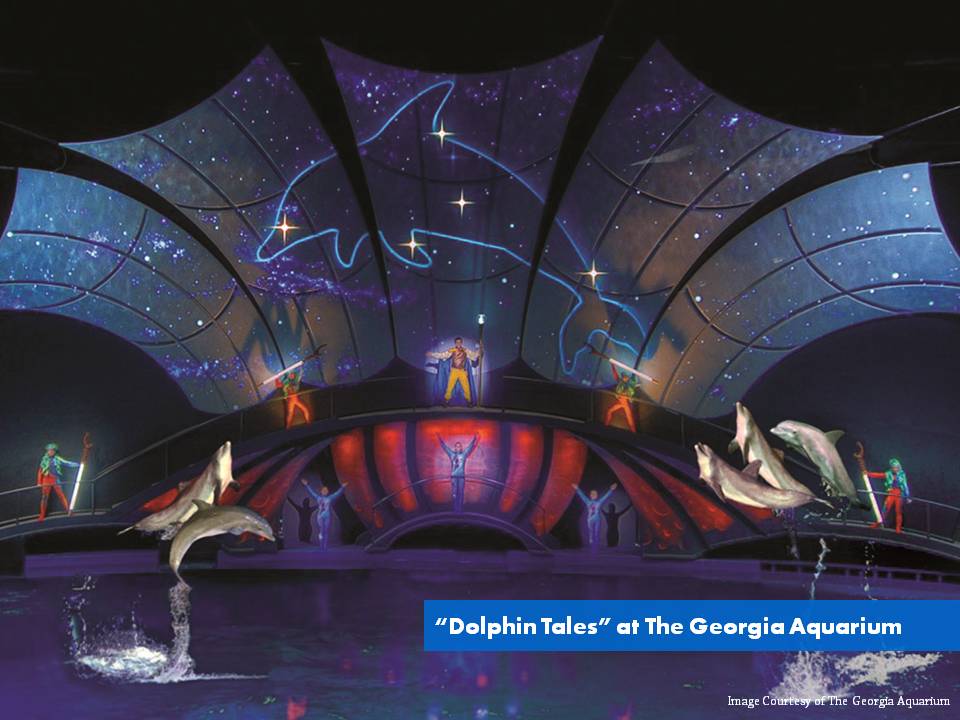 So how can you effectively plan shows for your institution? Dave suggests a logical approach of goal setting and programming based on a defined set of show production criteria, such as:
So how can you effectively plan shows for your institution? Dave suggests a logical approach of goal setting and programming based on a defined set of show production criteria, such as:
- Theater size
- Concessions
- Performer type
- Music
- Story conveyance
 Thorough evaluation of each of these characteristics looks not at the quality level, but at the specific assessment of size, scope, technology needs, staff allocation, etc. These evaluations will indicate where along the Show Production Scale your shows may fall—with the intention of creating a variety of experiences throughout your park.
Thorough evaluation of each of these characteristics looks not at the quality level, but at the specific assessment of size, scope, technology needs, staff allocation, etc. These evaluations will indicate where along the Show Production Scale your shows may fall—with the intention of creating a variety of experiences throughout your park.
Stay tuned for Part II where Dave explores the past, present and future of show production.
Training Butterflies for Interactions
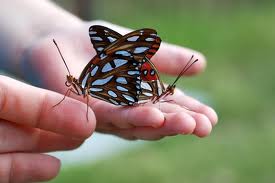 During the AZA 2012 poster session, I came across an intriguing group describing how they've successfully trained butterflies for interactions. Yes, you read that correctly. In actuality, "training" is somewhat a misnomer for butterflies; more accurately, they are habituated for handling, and manipulated into long basking periods (by understanding the natural physiology and behavior of the insects).
Woodman, Kim and Kassinger have seen the benefits of these increased and prolonged interactions through guest enjoyment, but also by leveraging the experience for revenue potential: the consistency of behavior allows for guaranteed photo ops.
During the AZA 2012 poster session, I came across an intriguing group describing how they've successfully trained butterflies for interactions. Yes, you read that correctly. In actuality, "training" is somewhat a misnomer for butterflies; more accurately, they are habituated for handling, and manipulated into long basking periods (by understanding the natural physiology and behavior of the insects).
Woodman, Kim and Kassinger have seen the benefits of these increased and prolonged interactions through guest enjoyment, but also by leveraging the experience for revenue potential: the consistency of behavior allows for guaranteed photo ops.
Learn more about their project and how you can create your own program by reading their full paper here: Butterfly Experiences by Woodman, Kim & Kassinger






